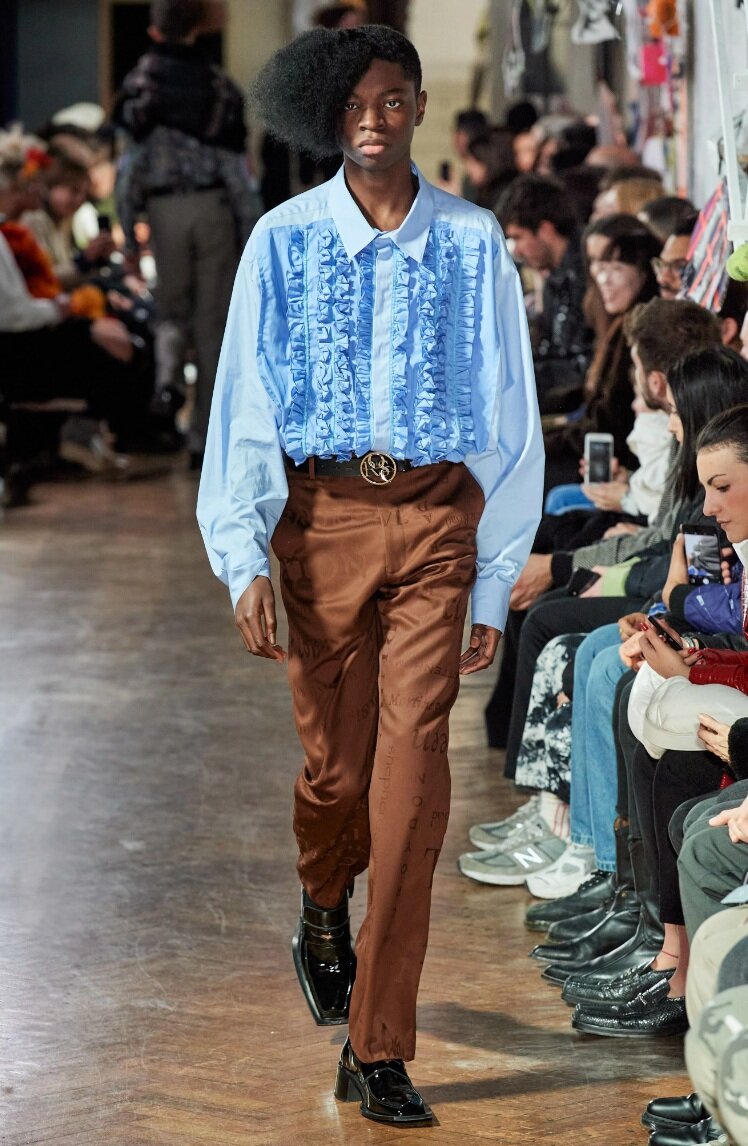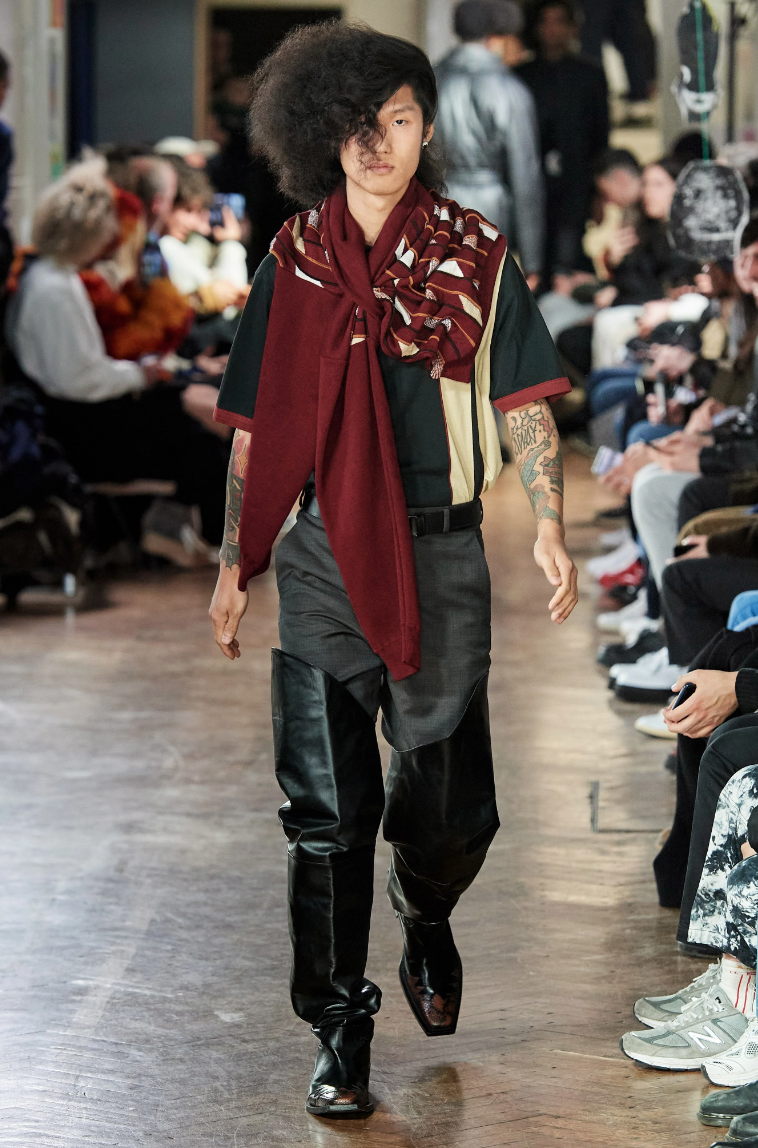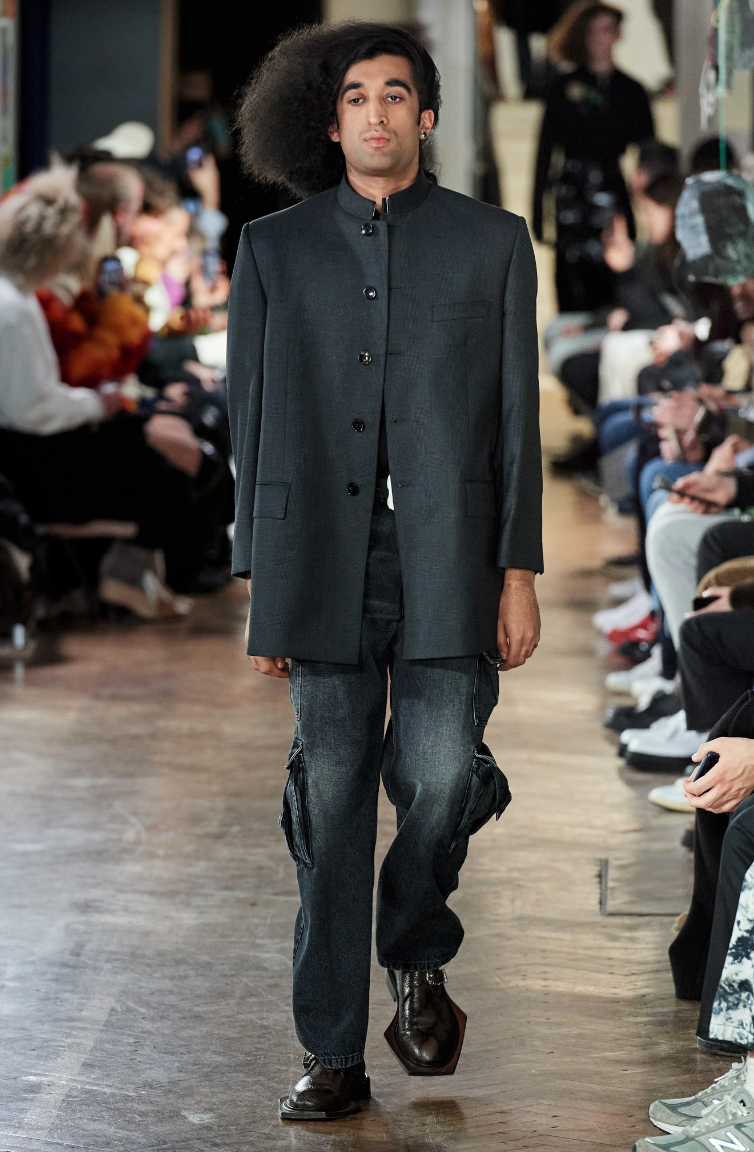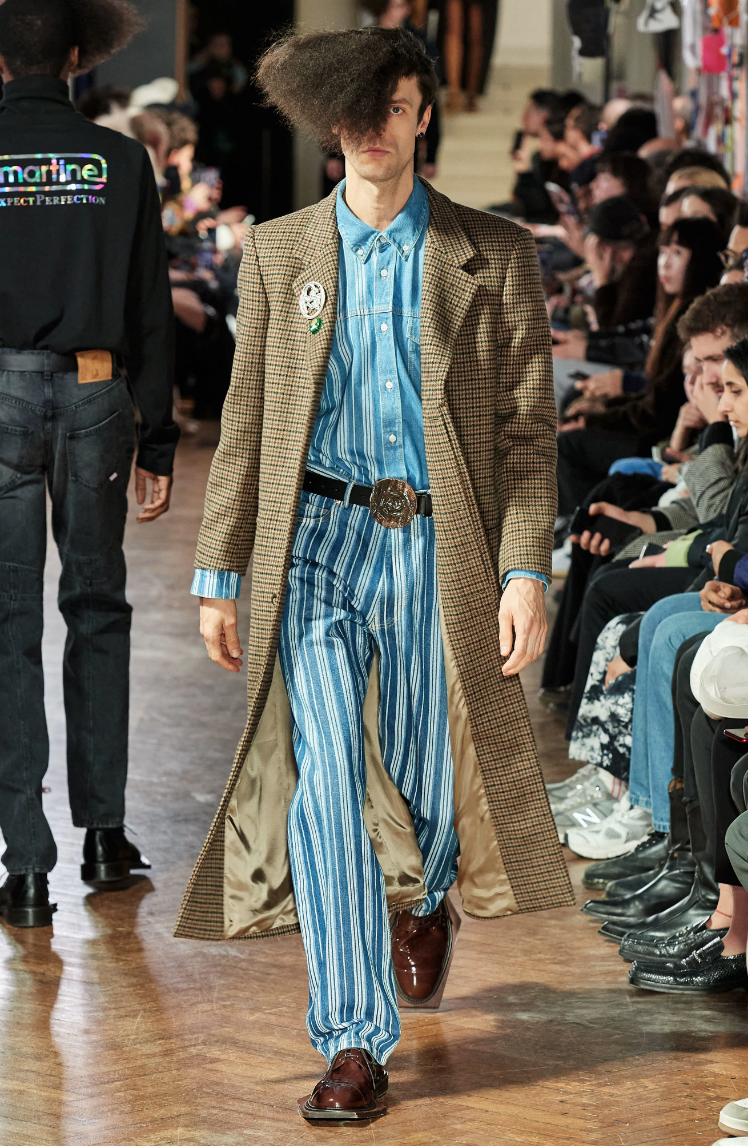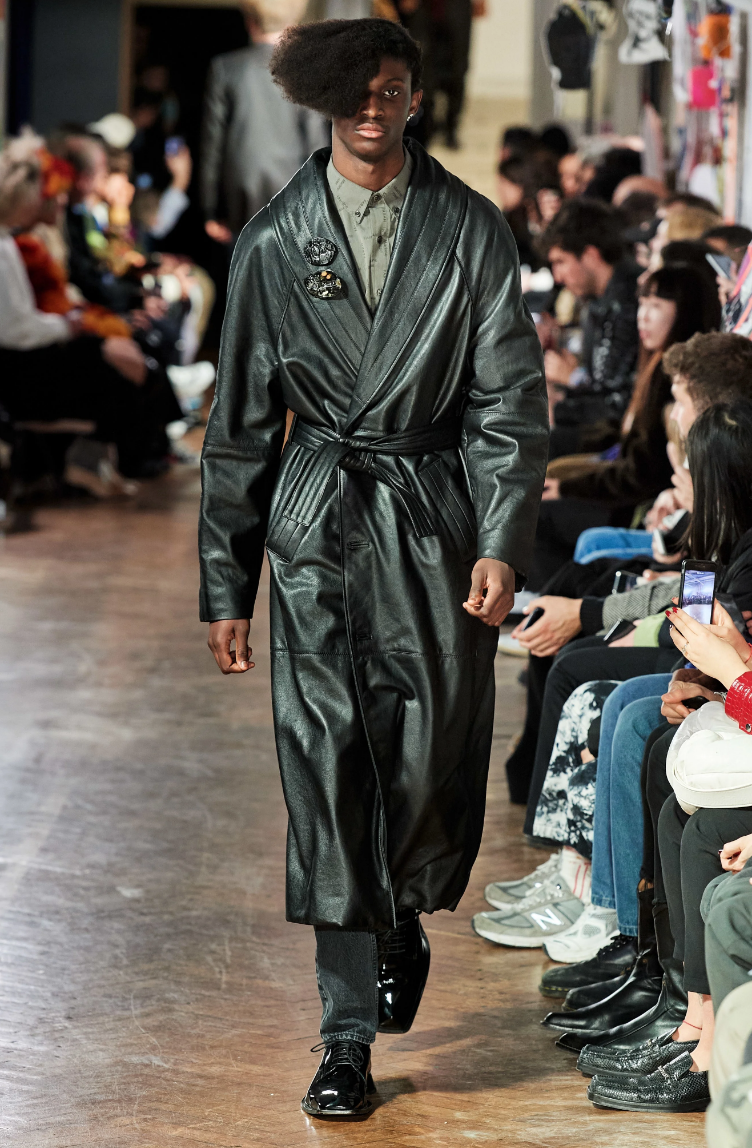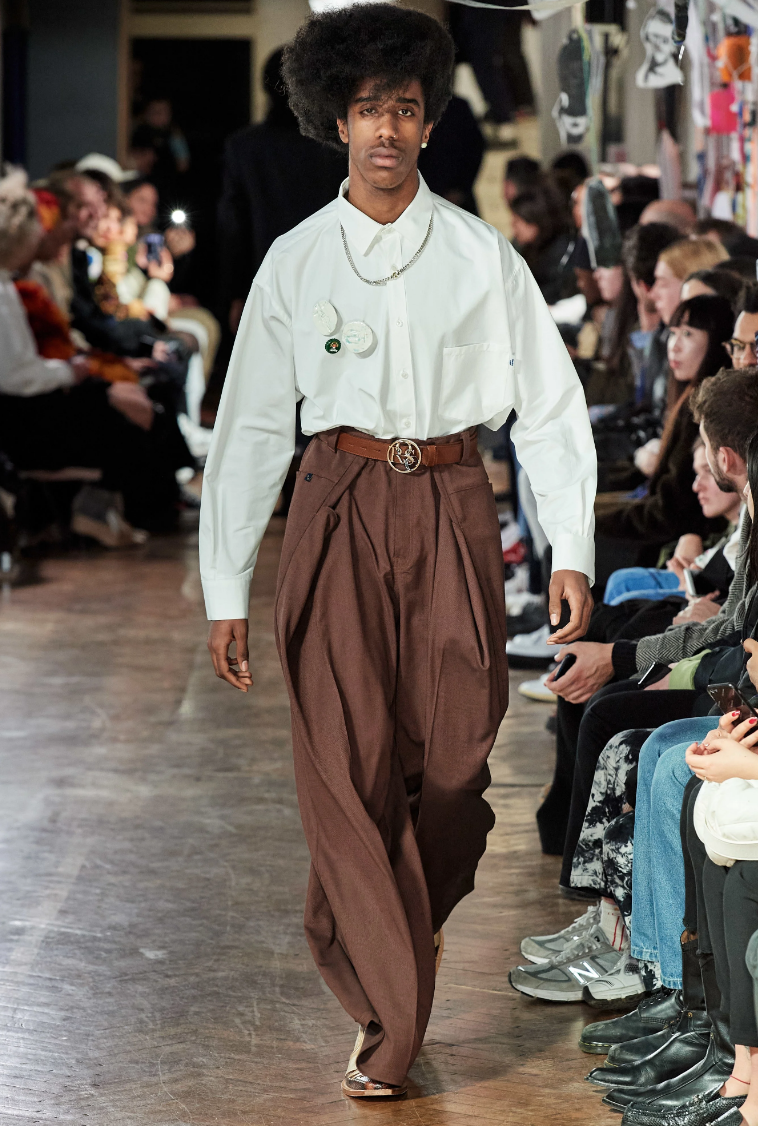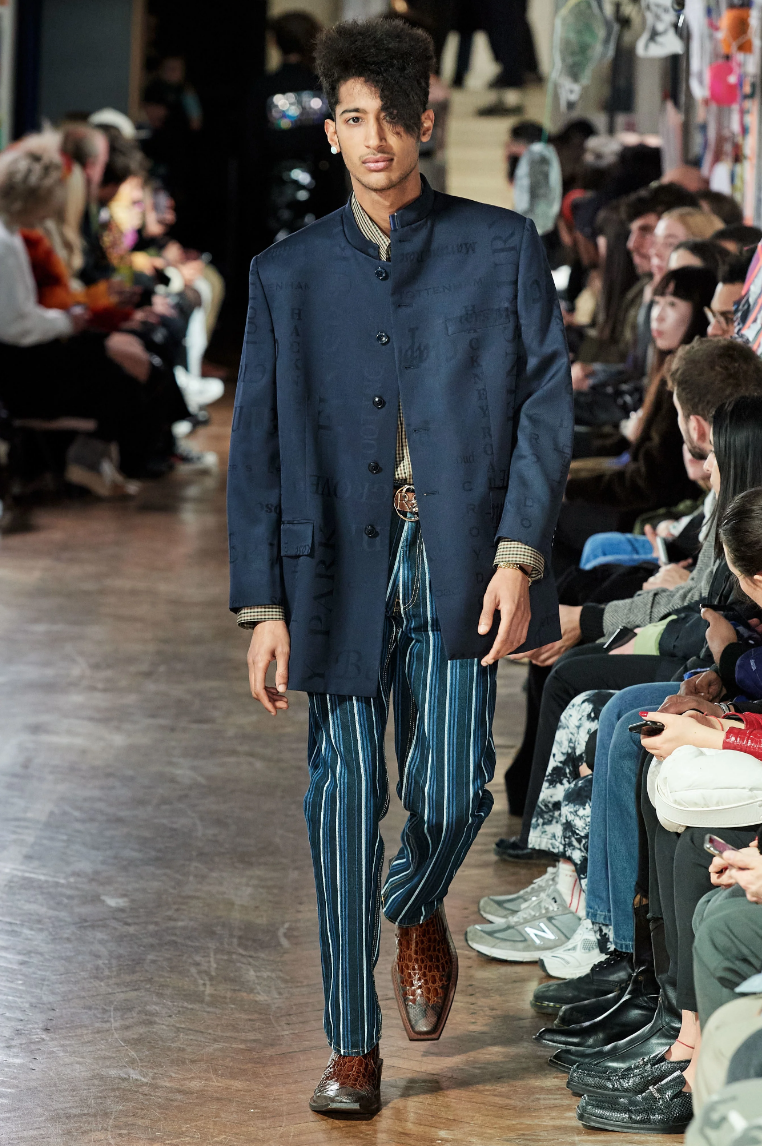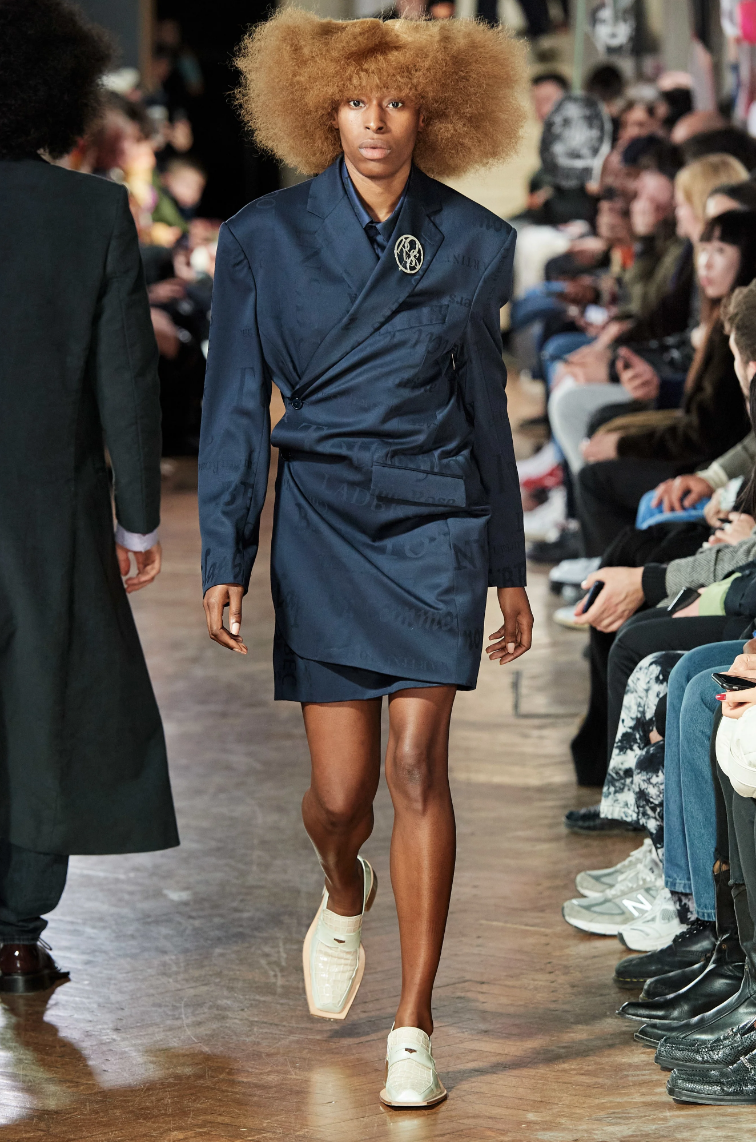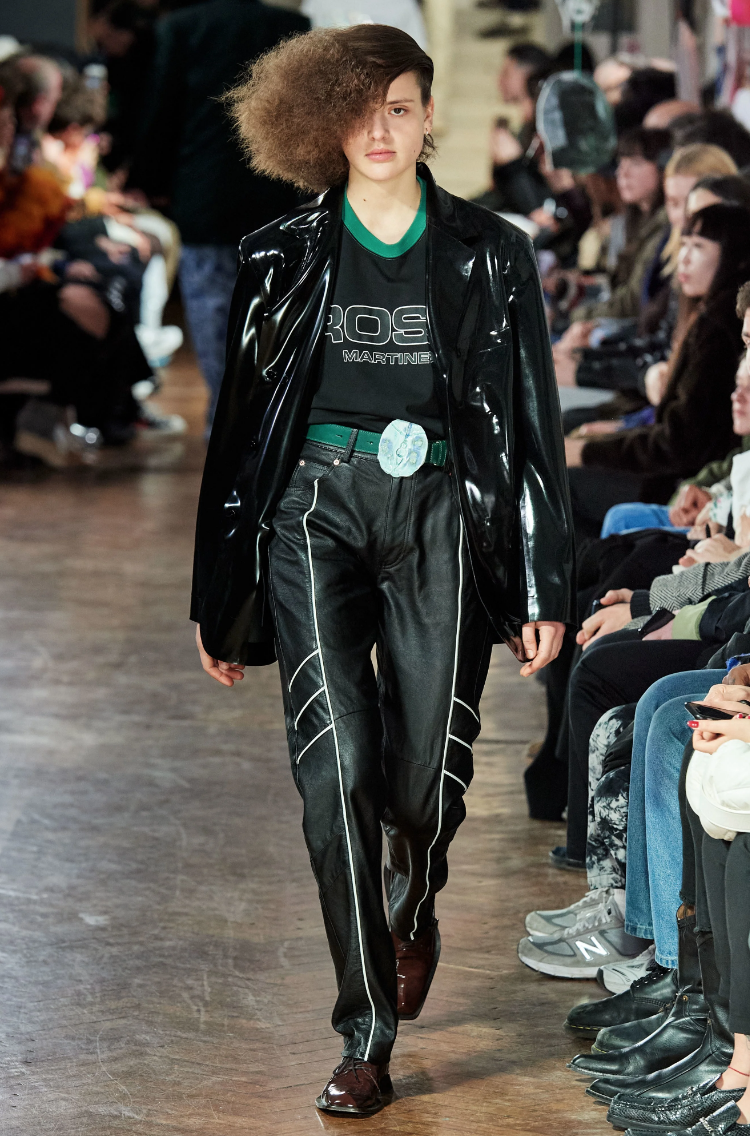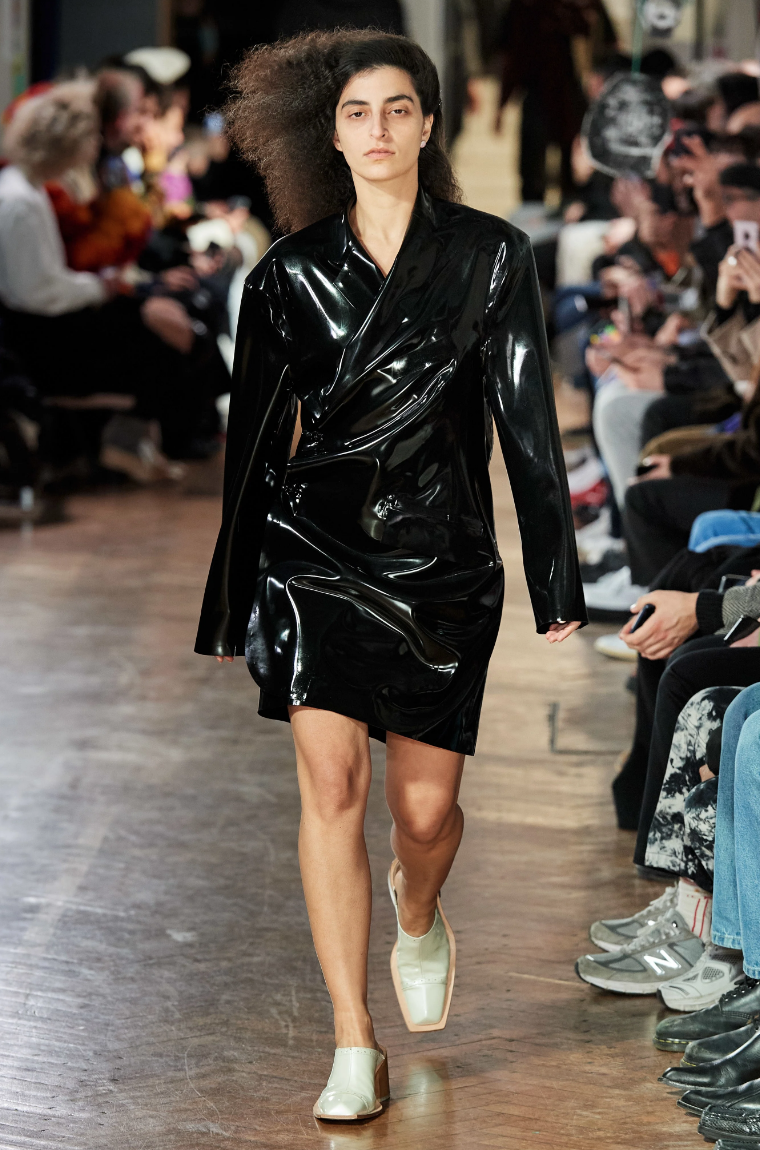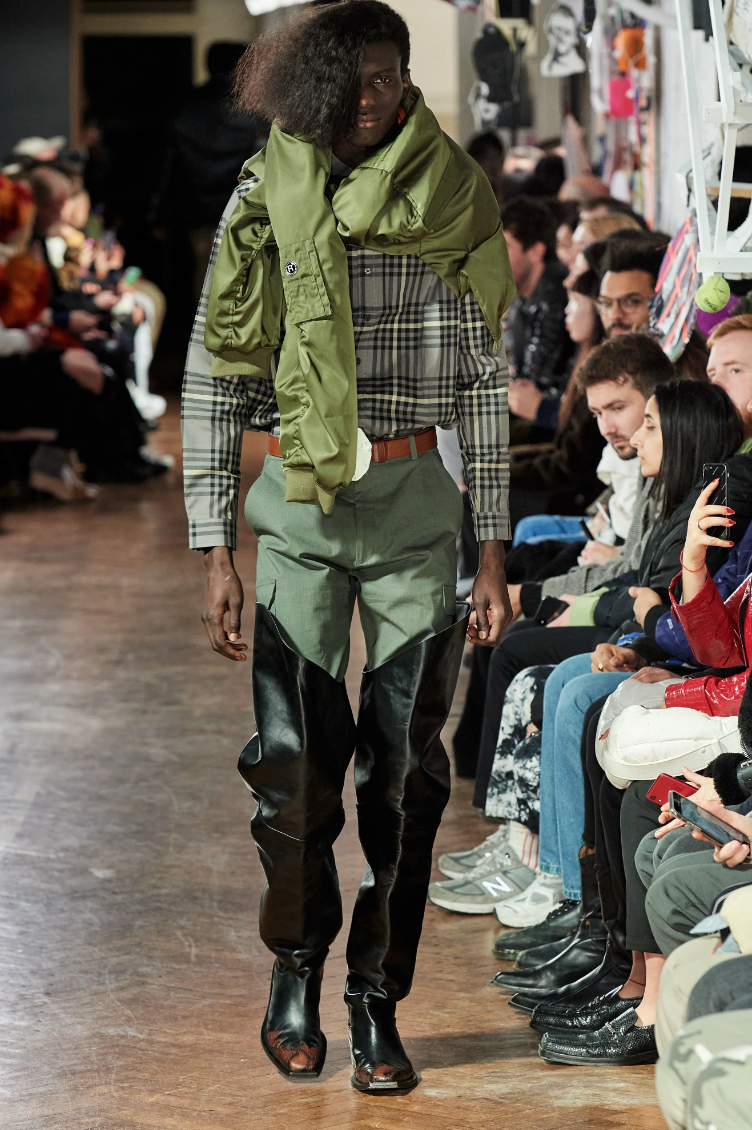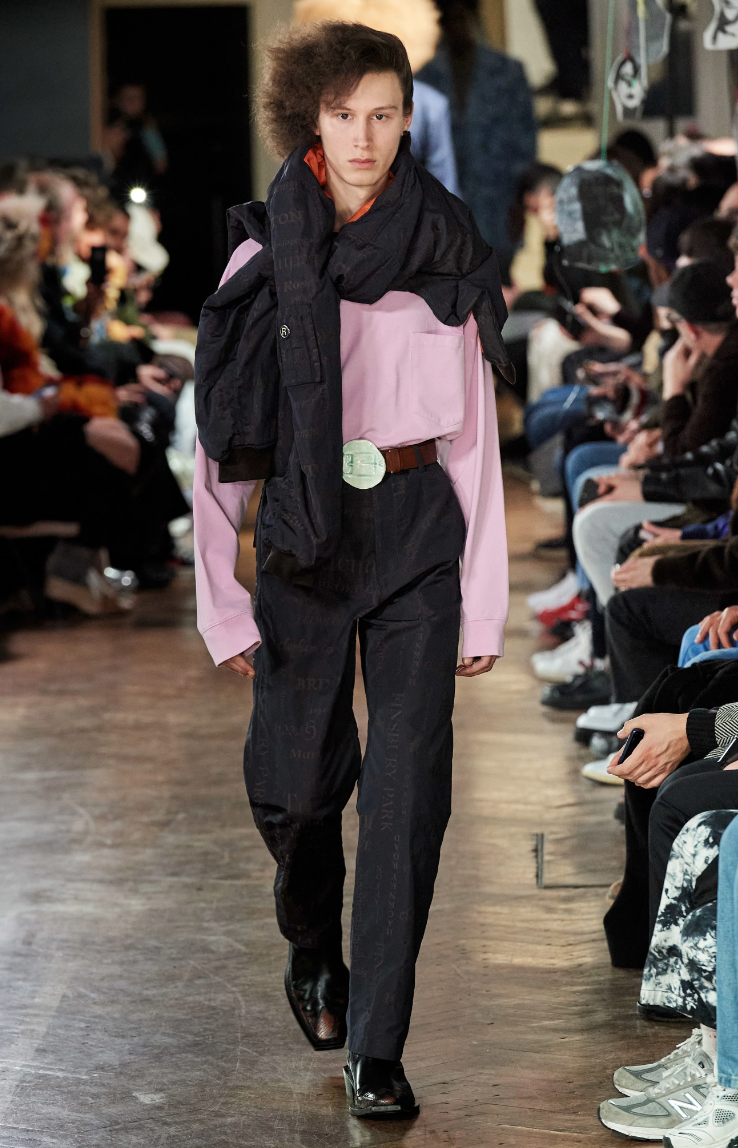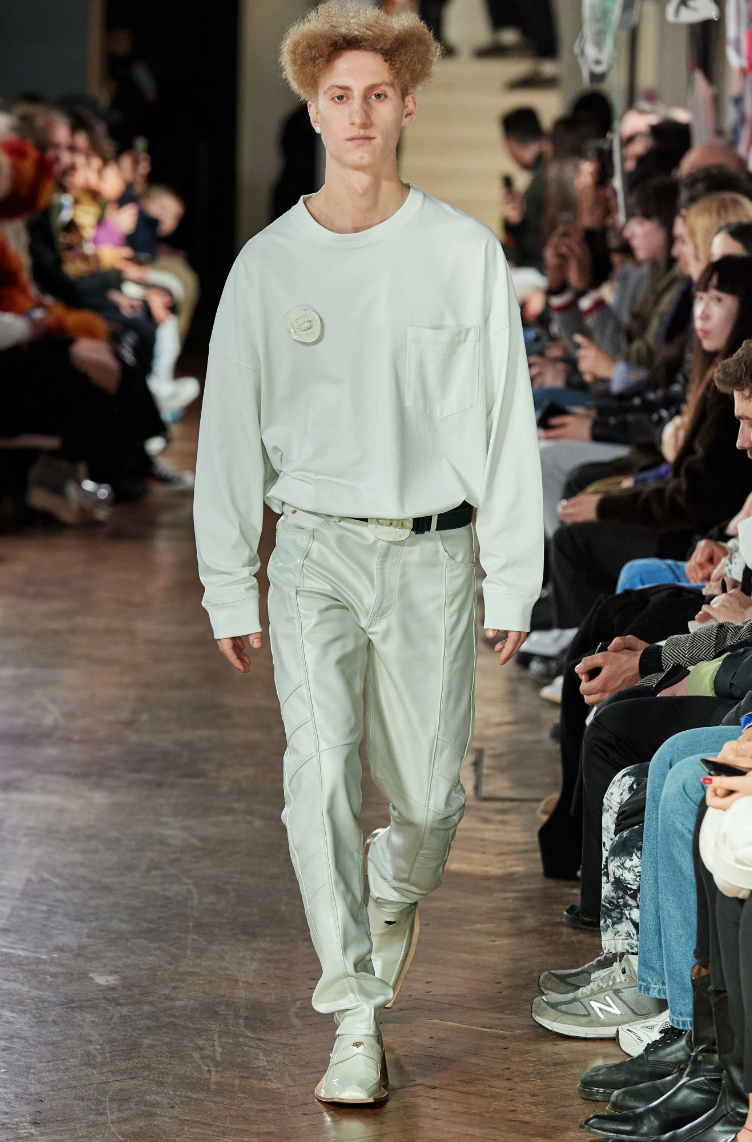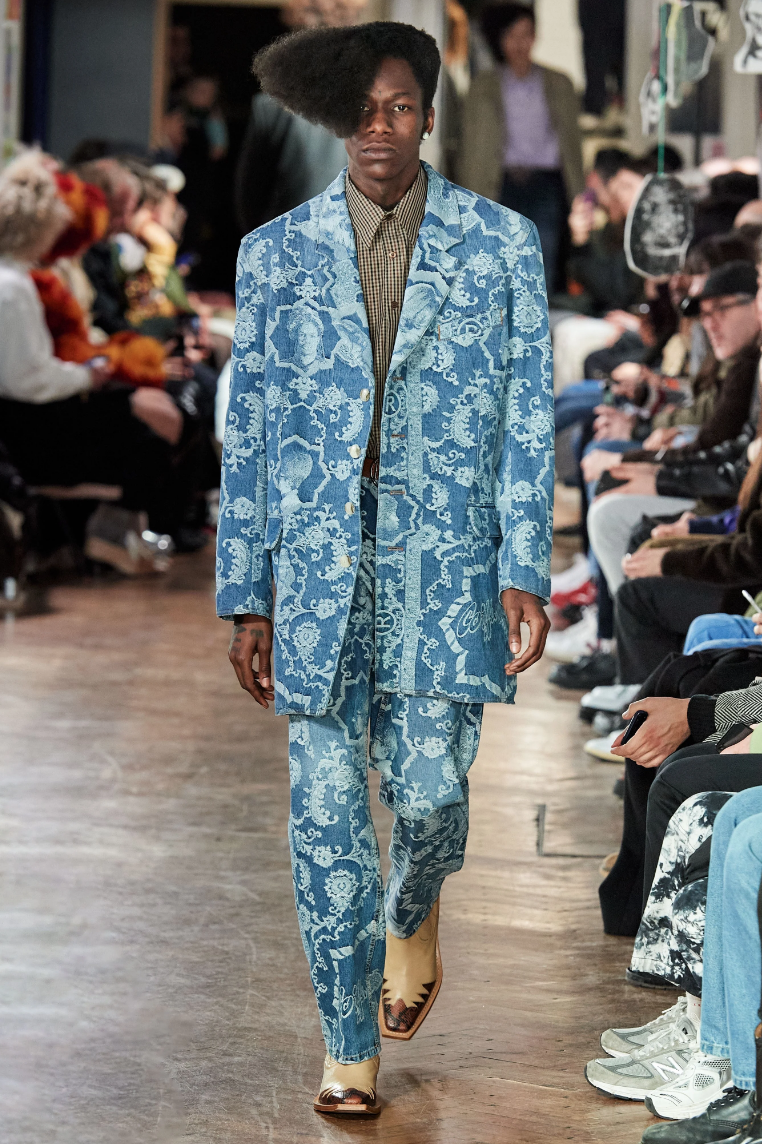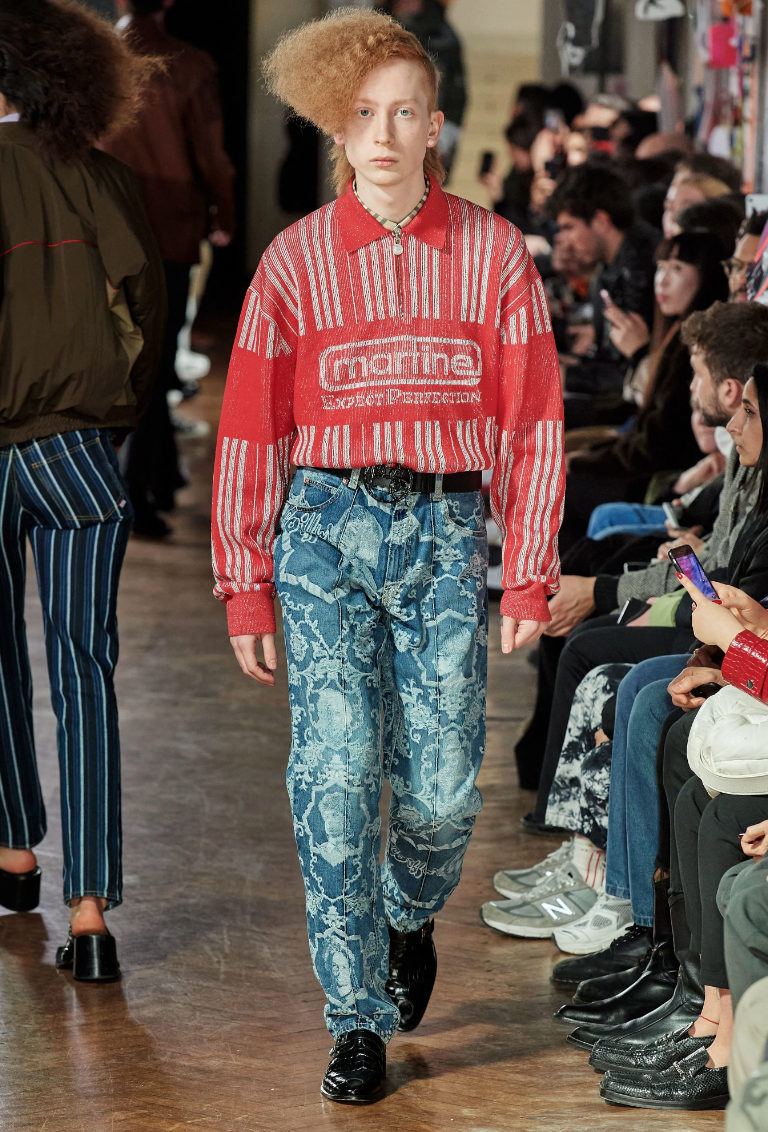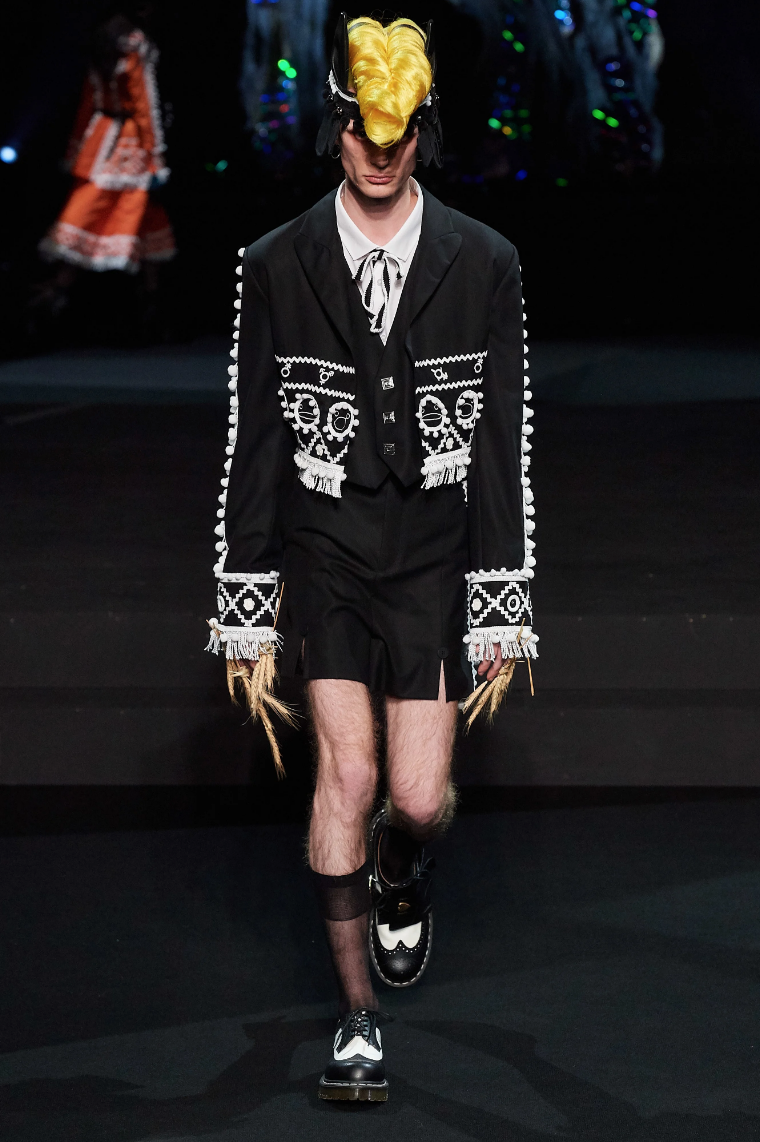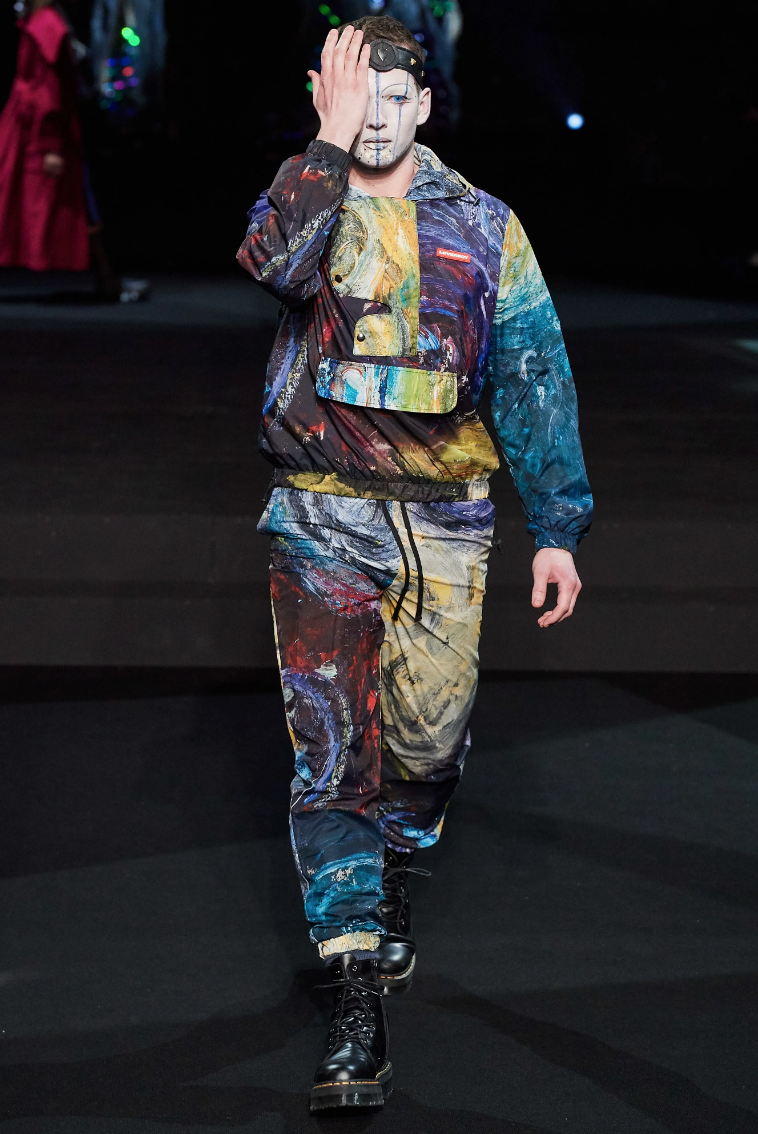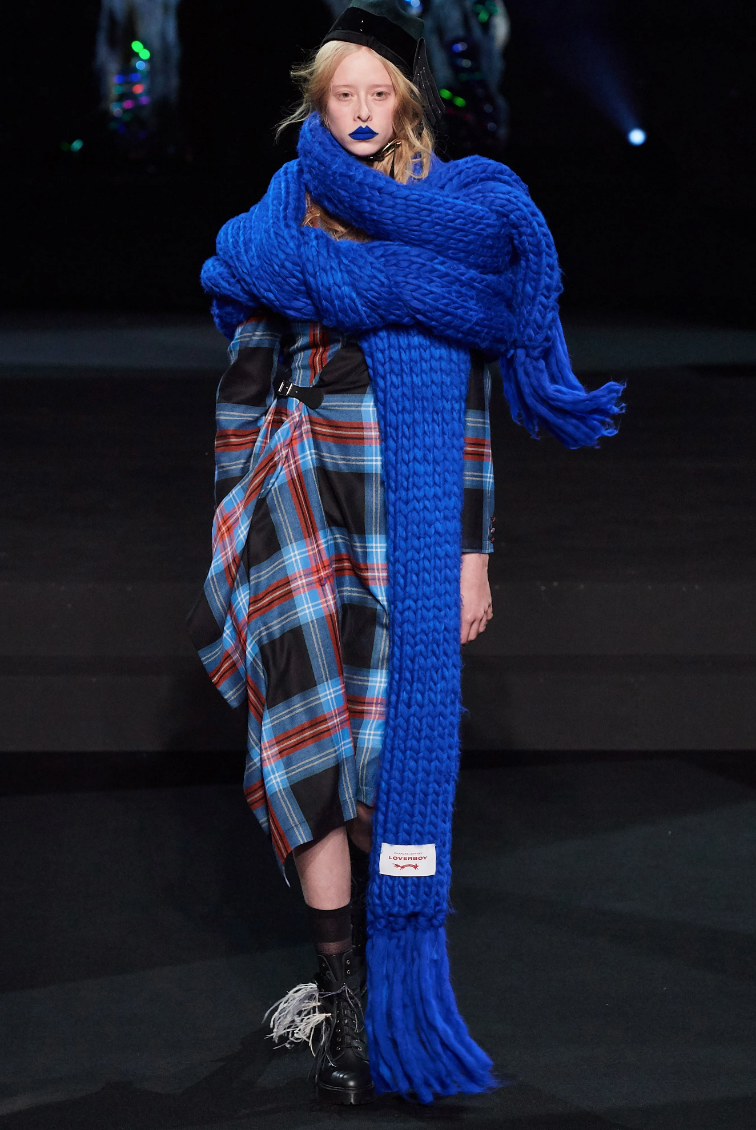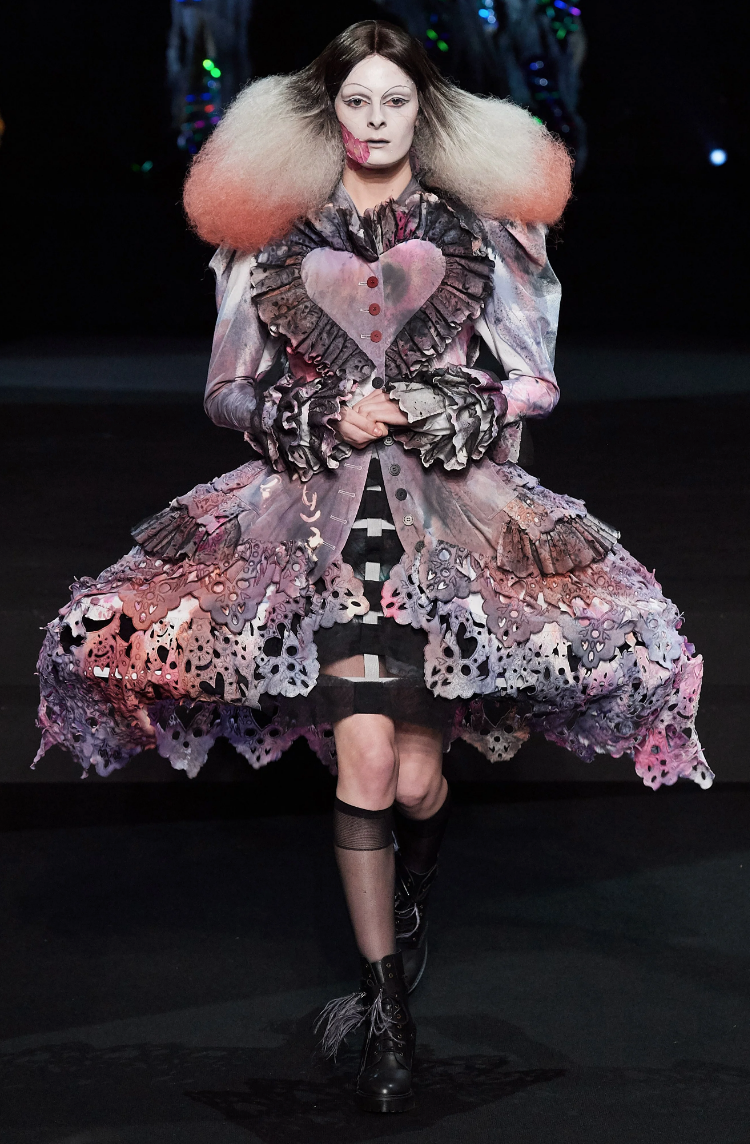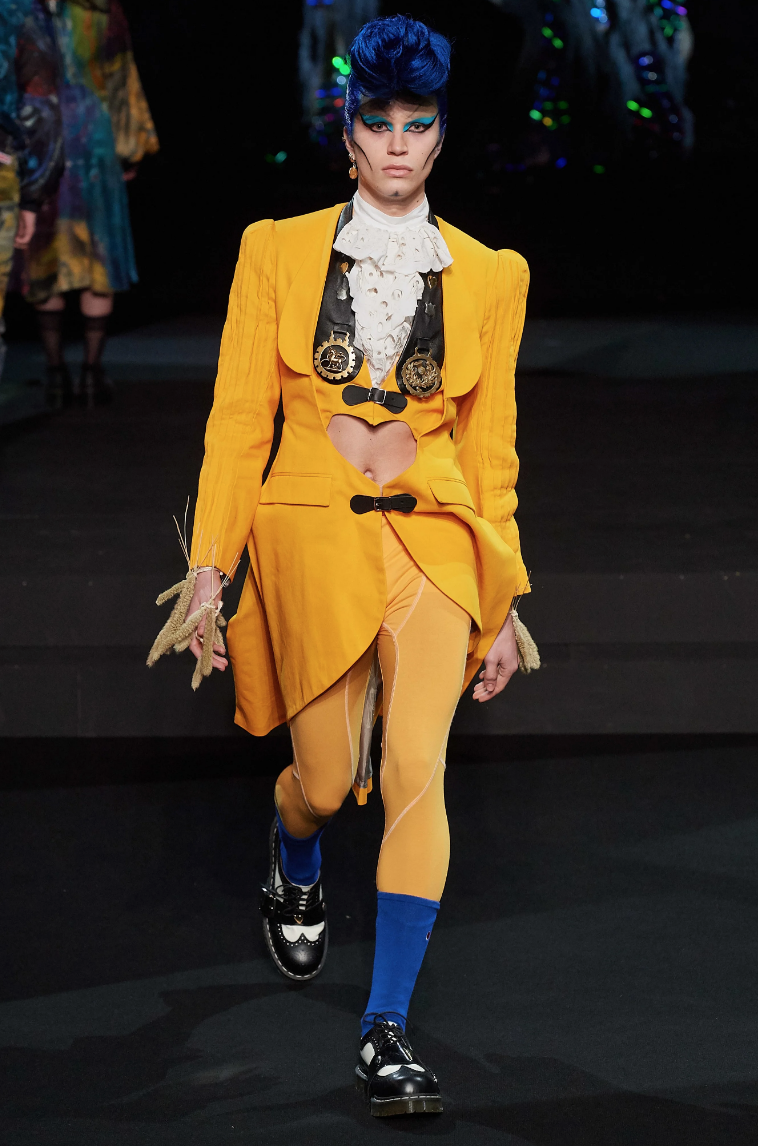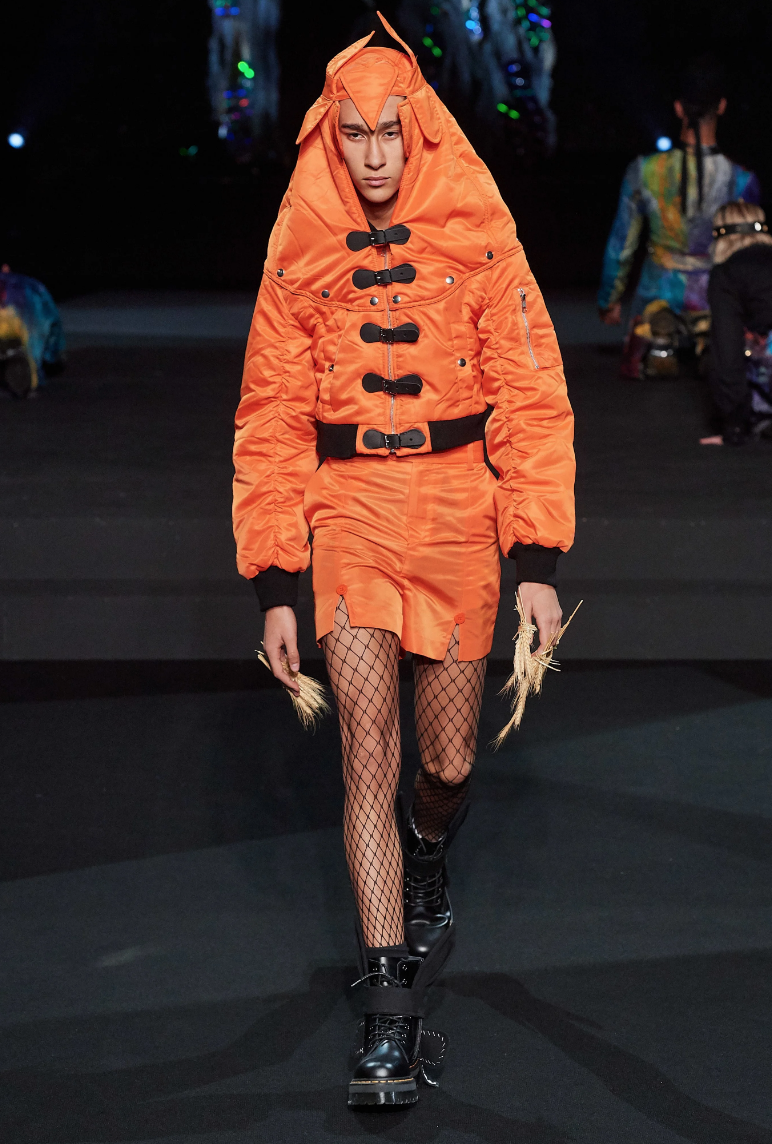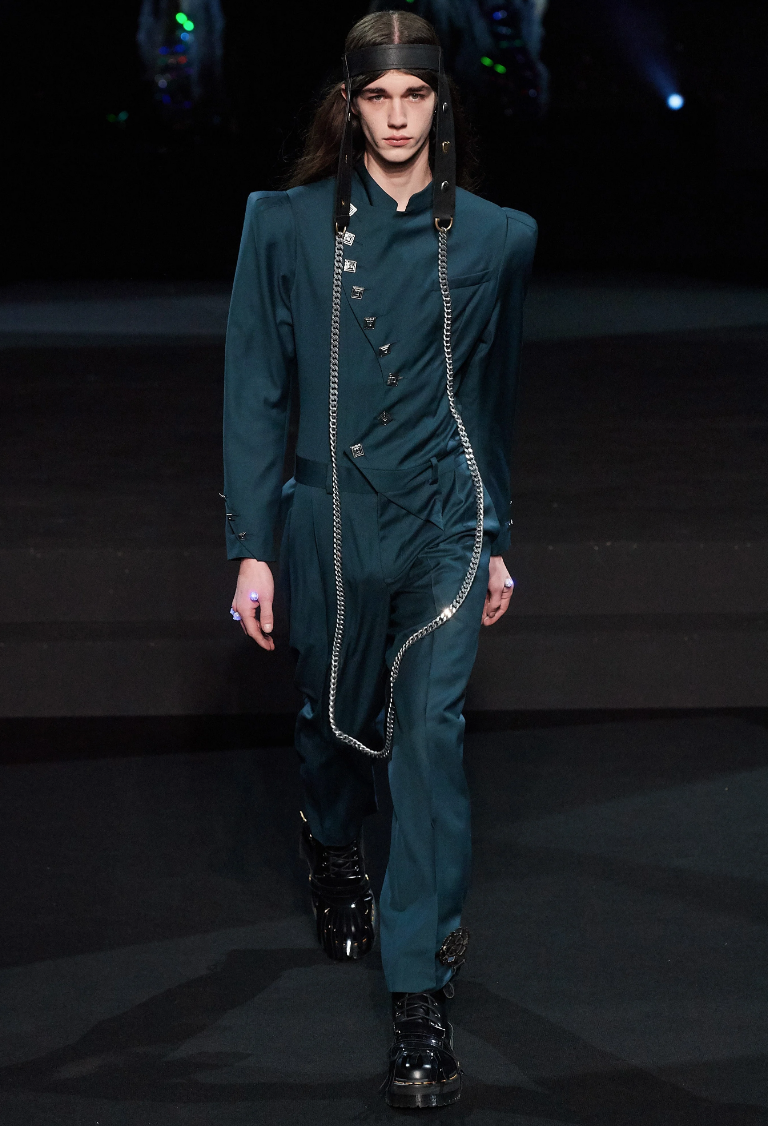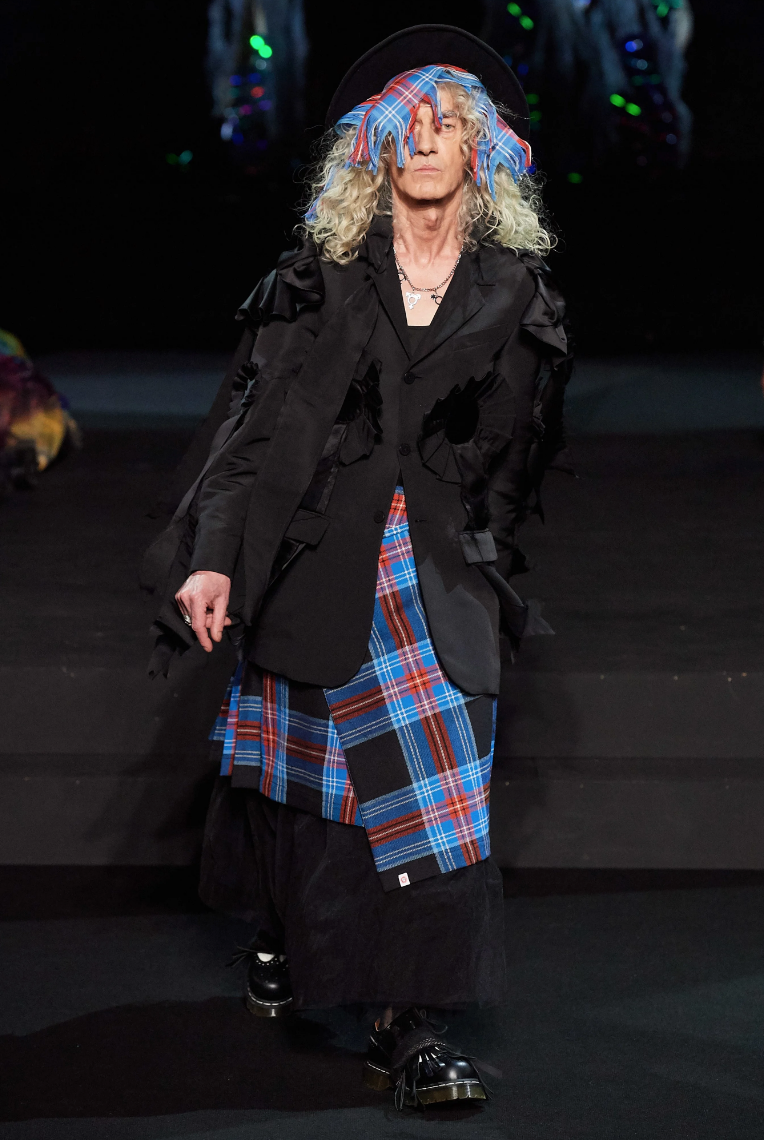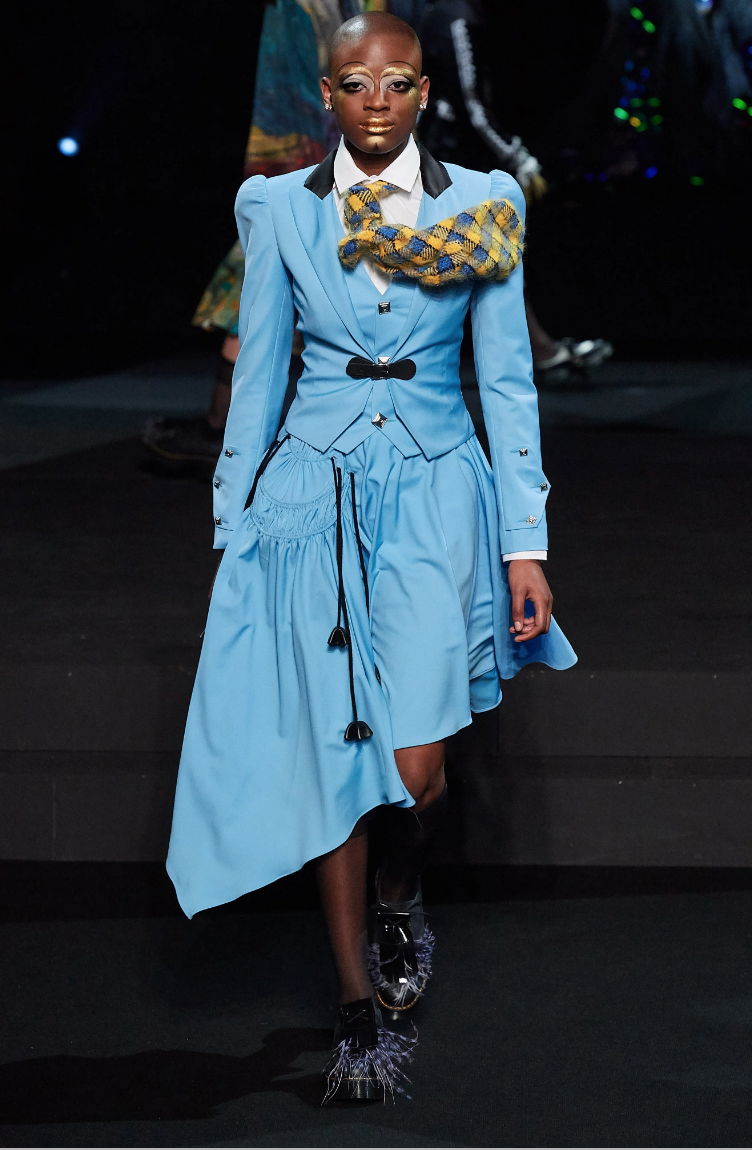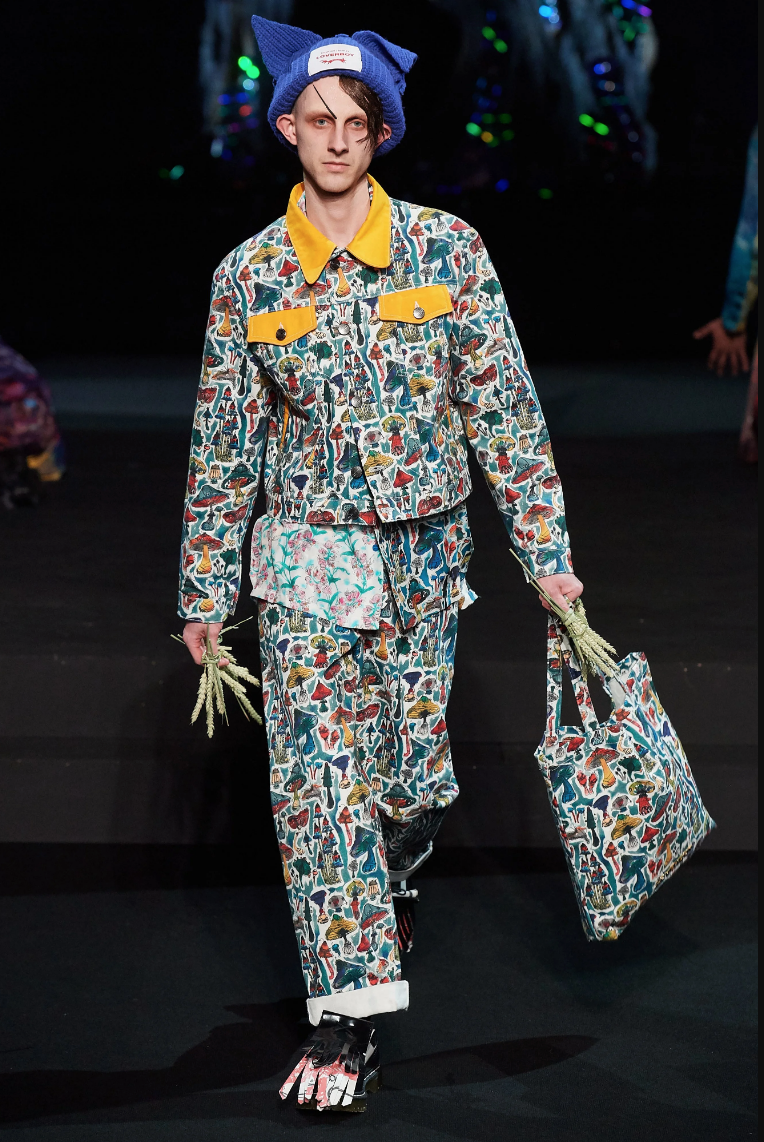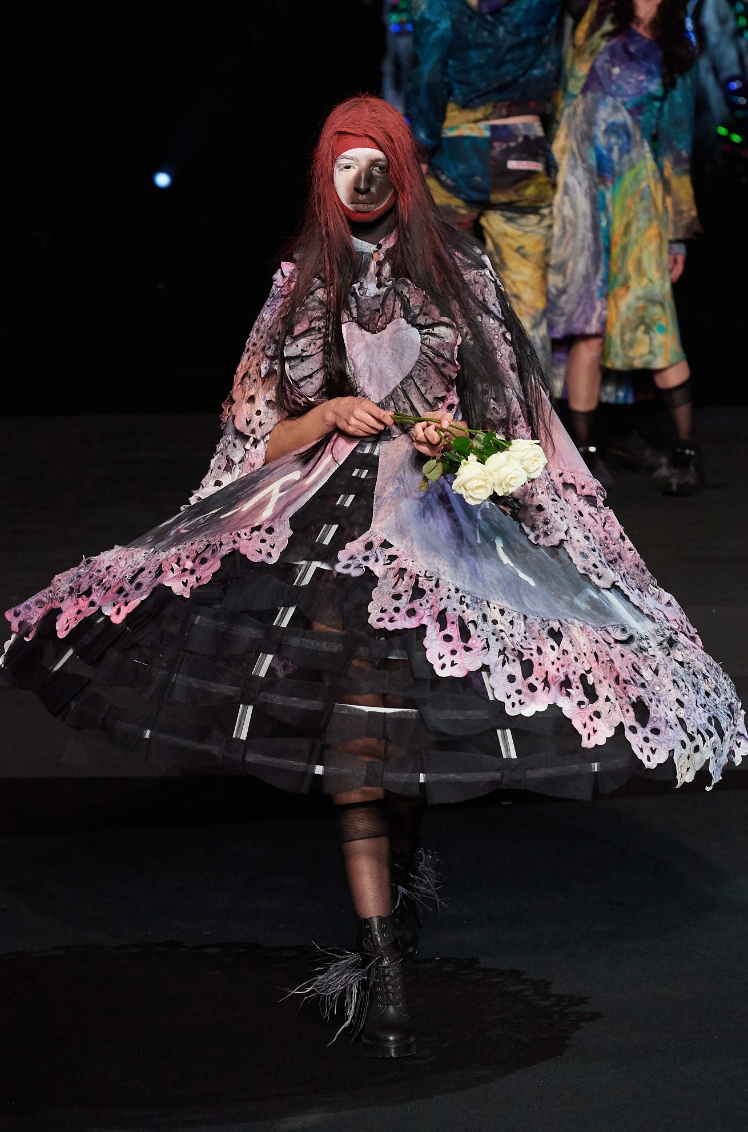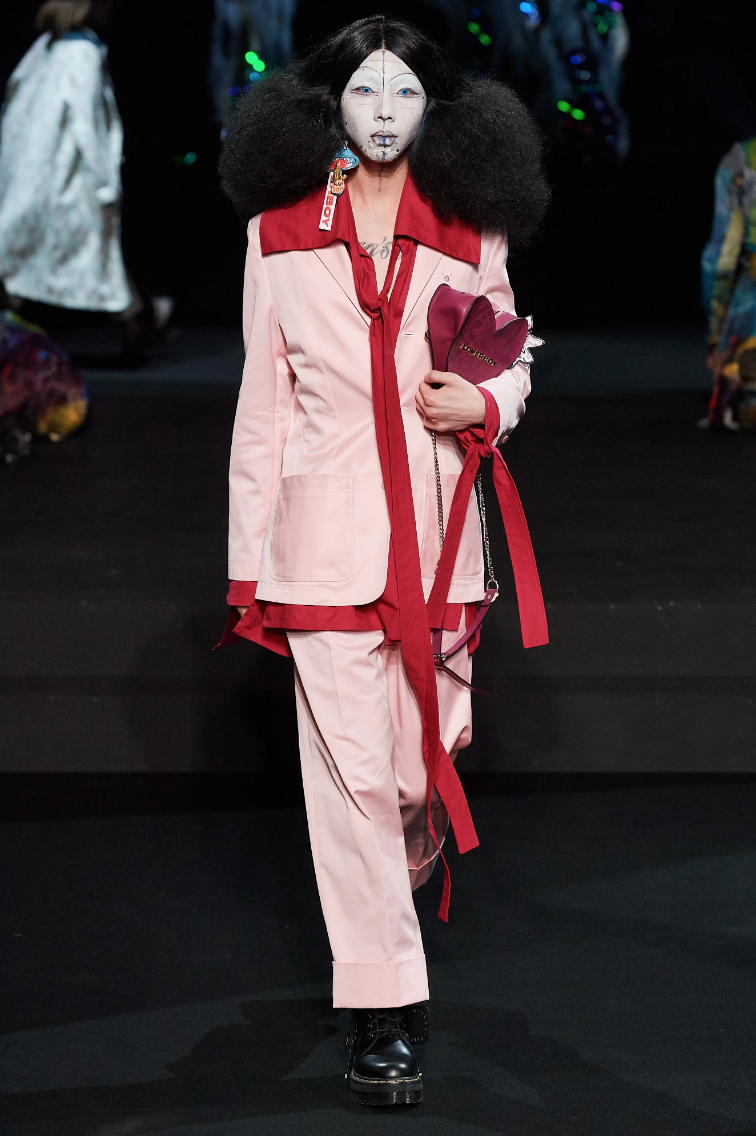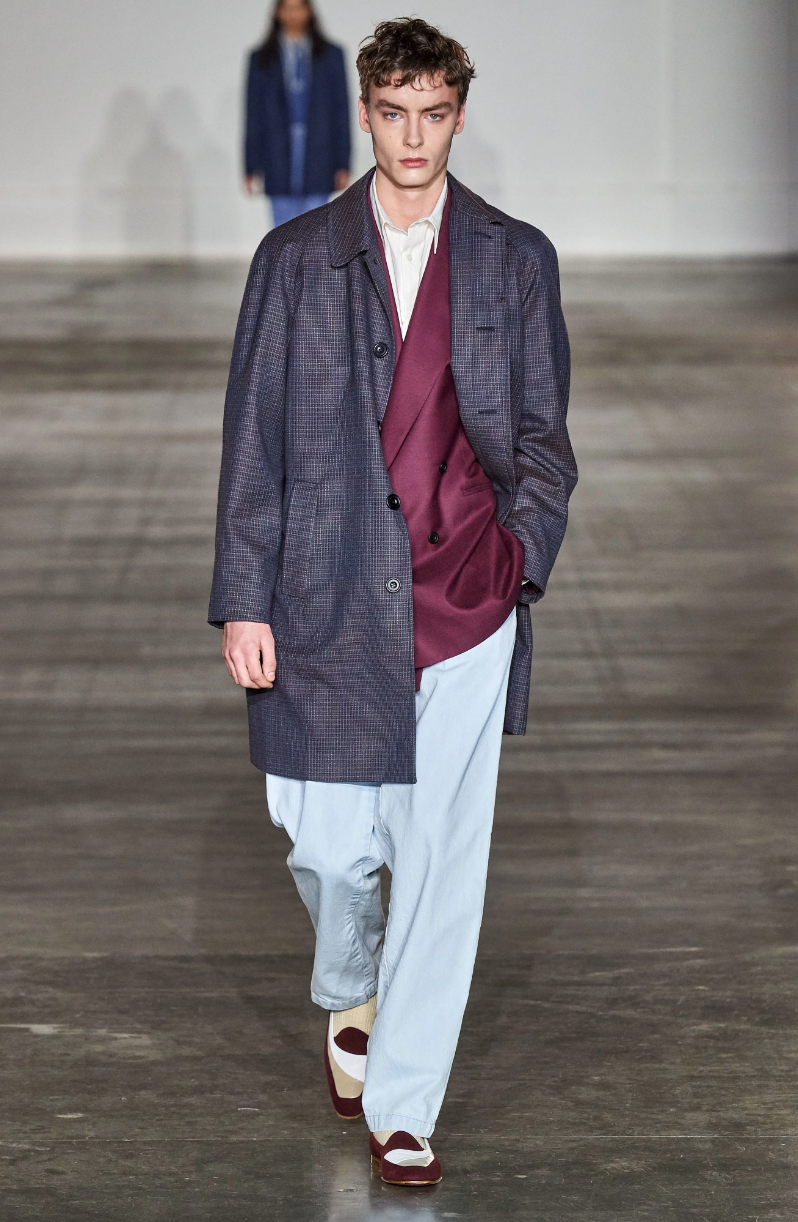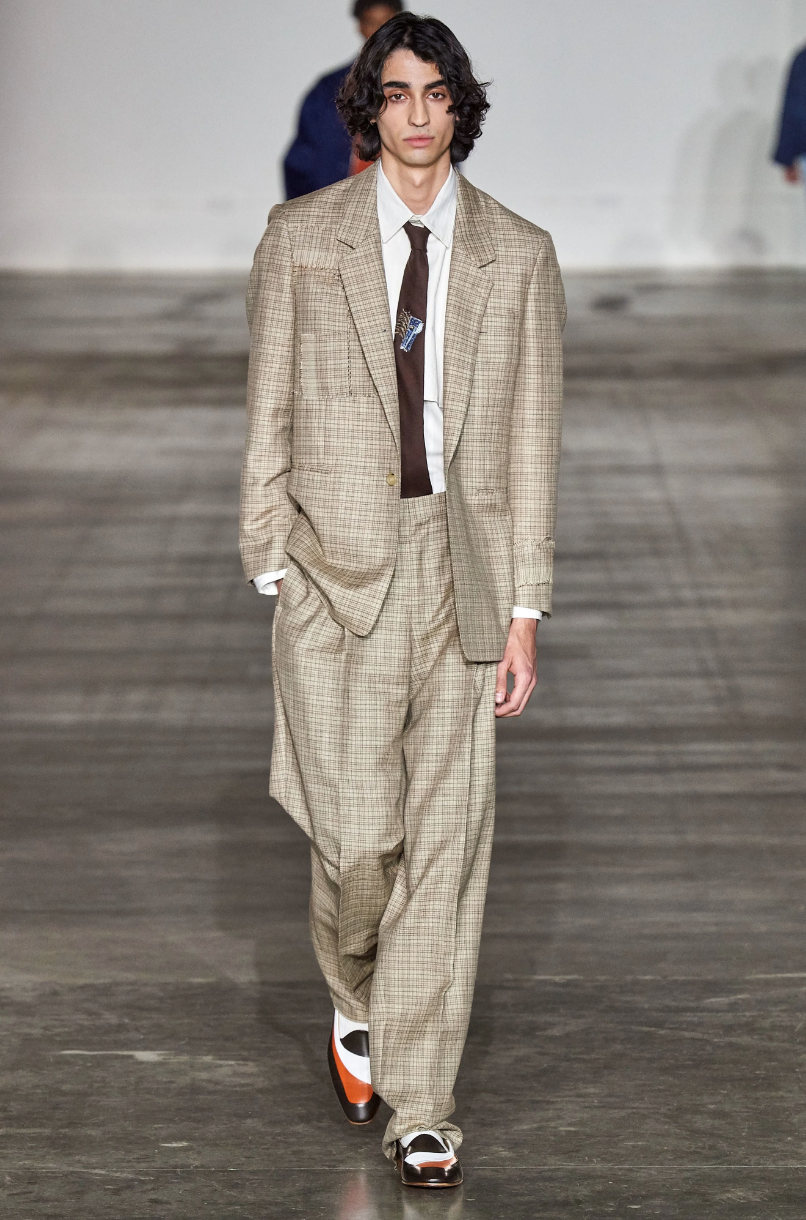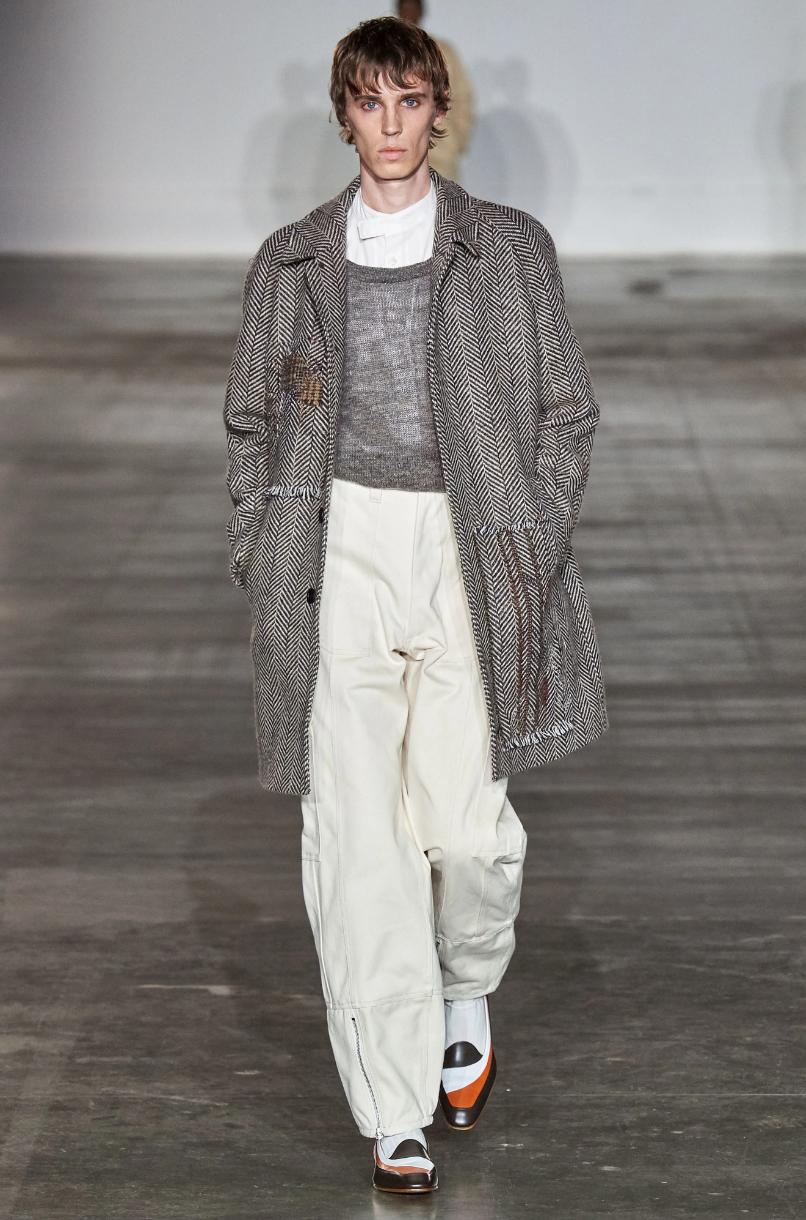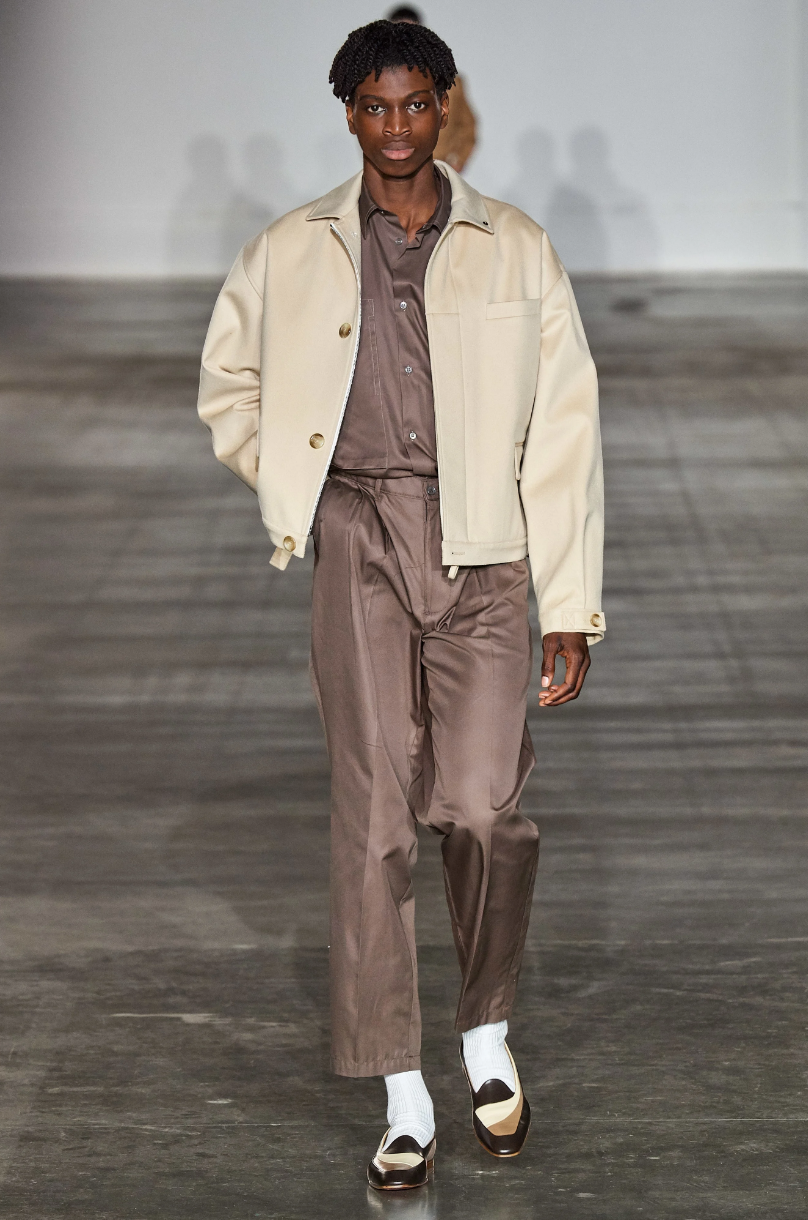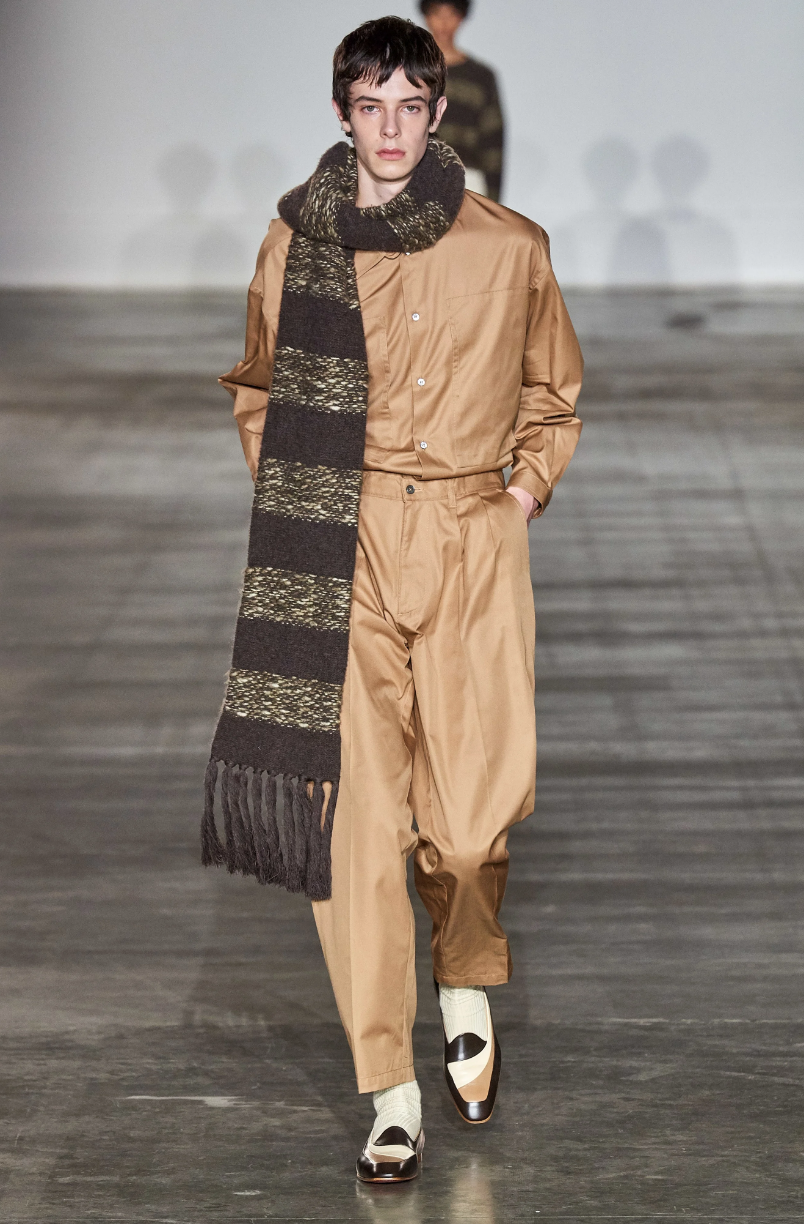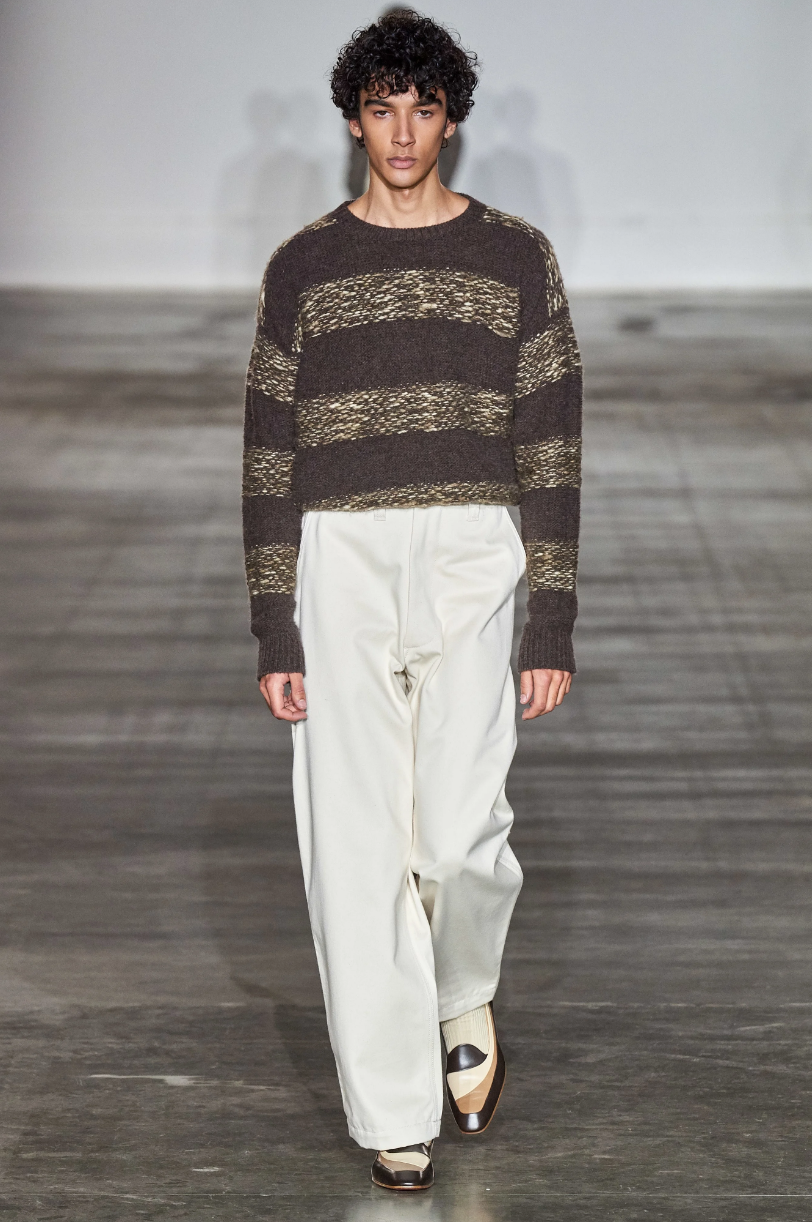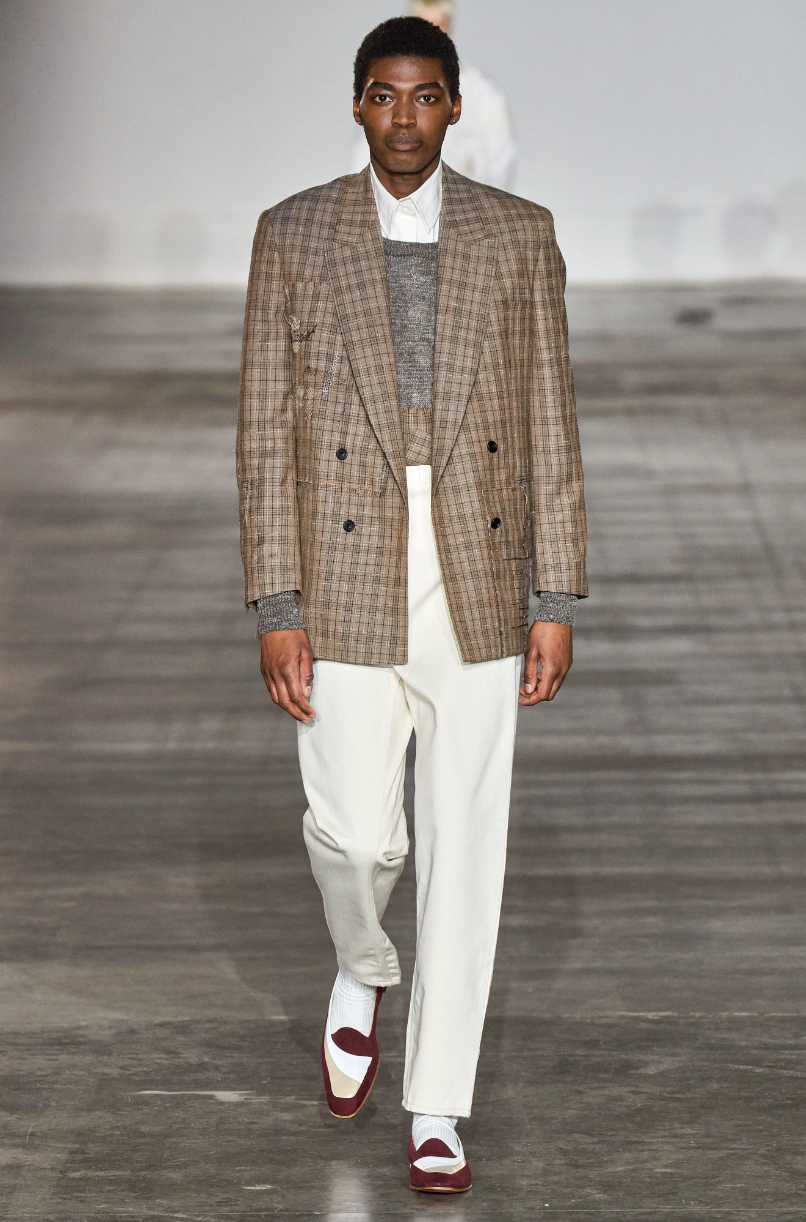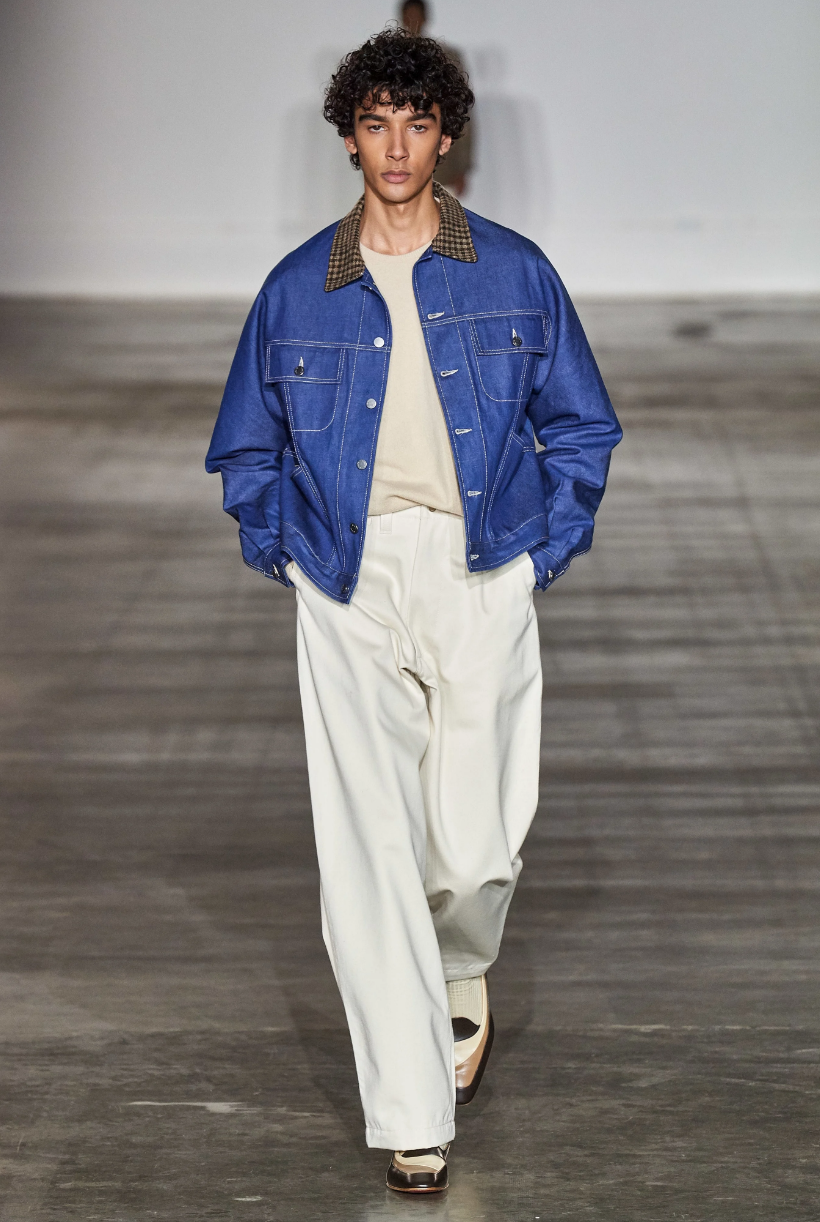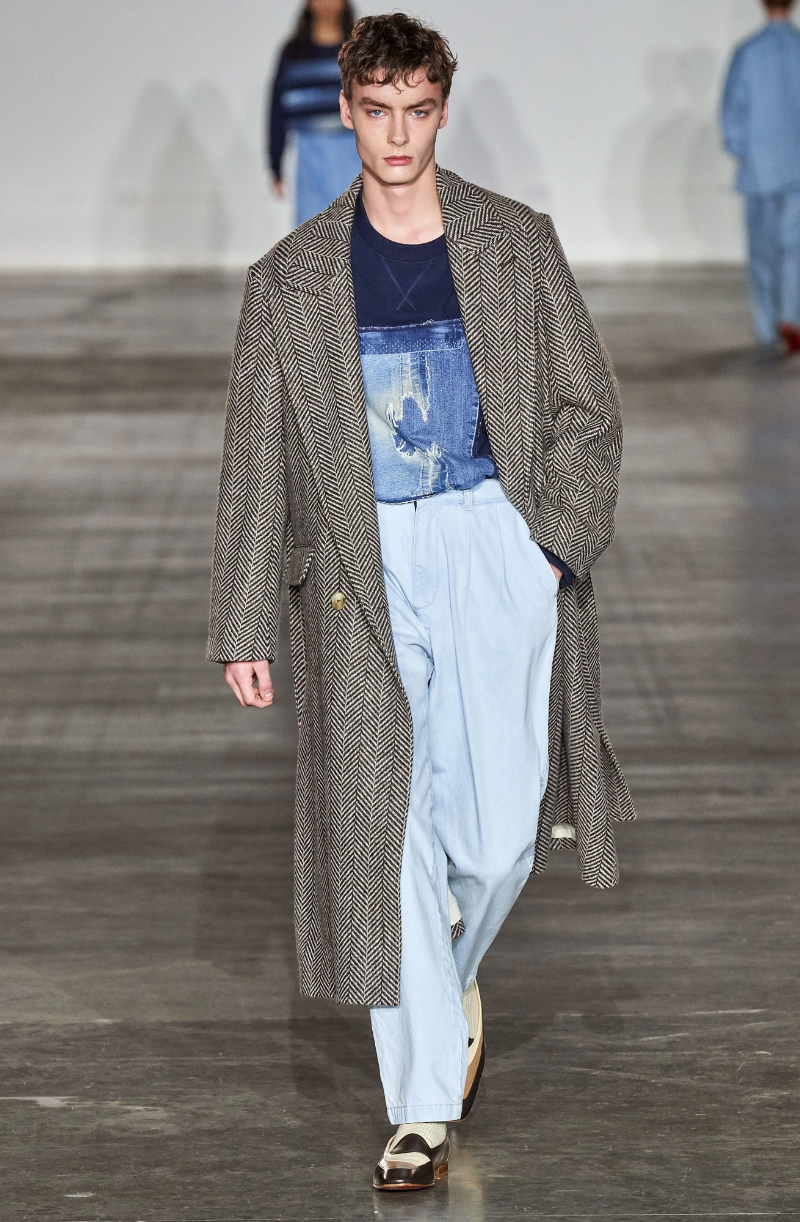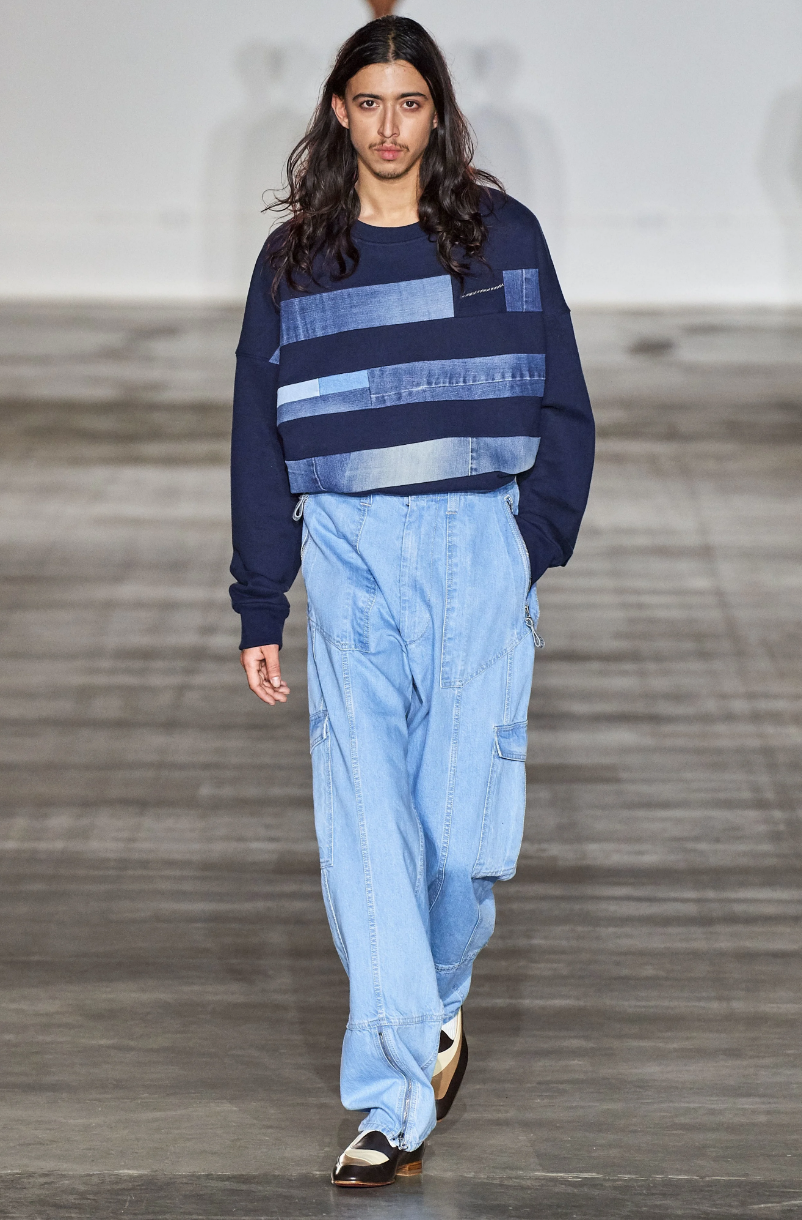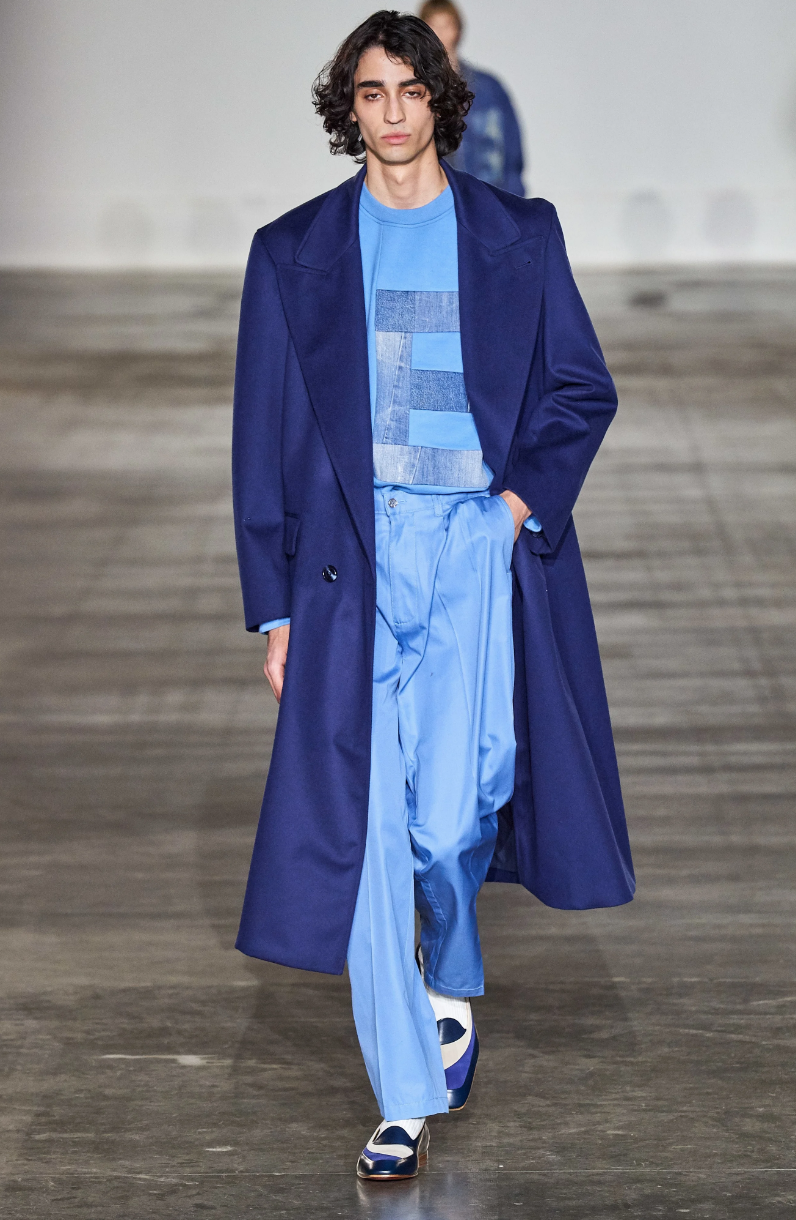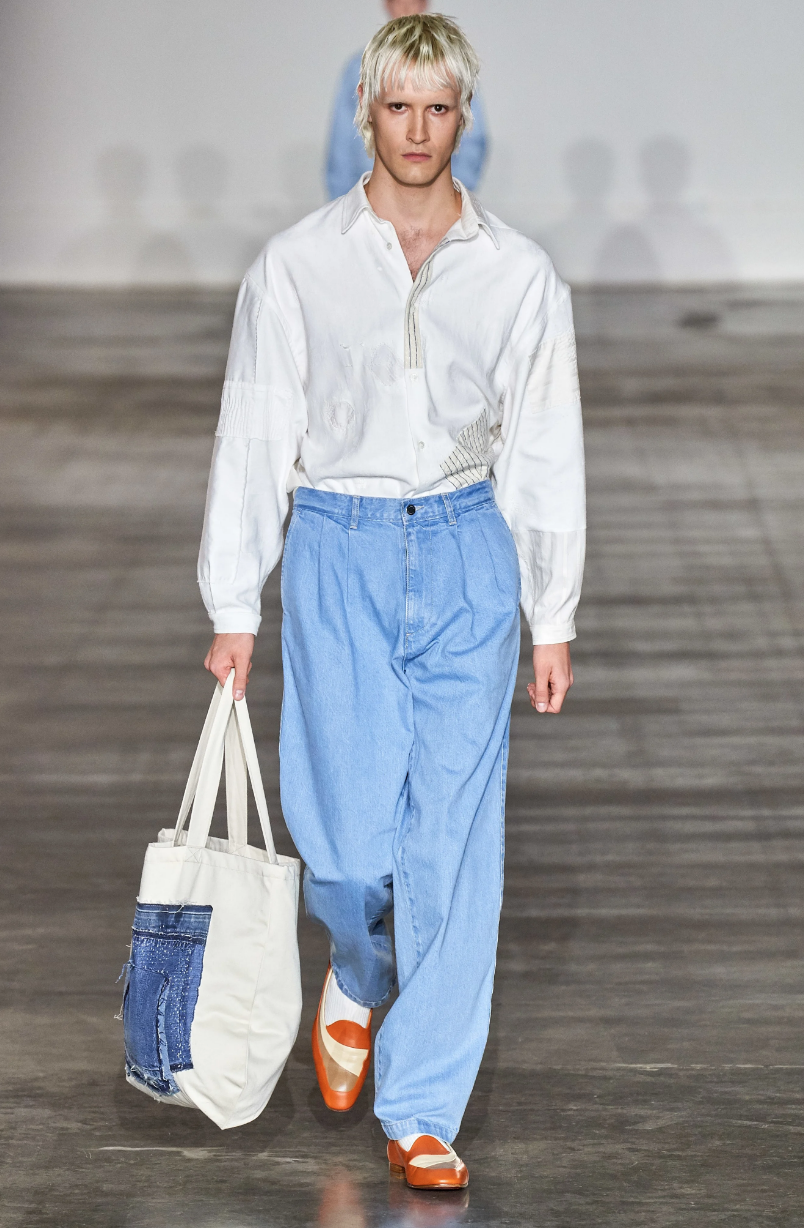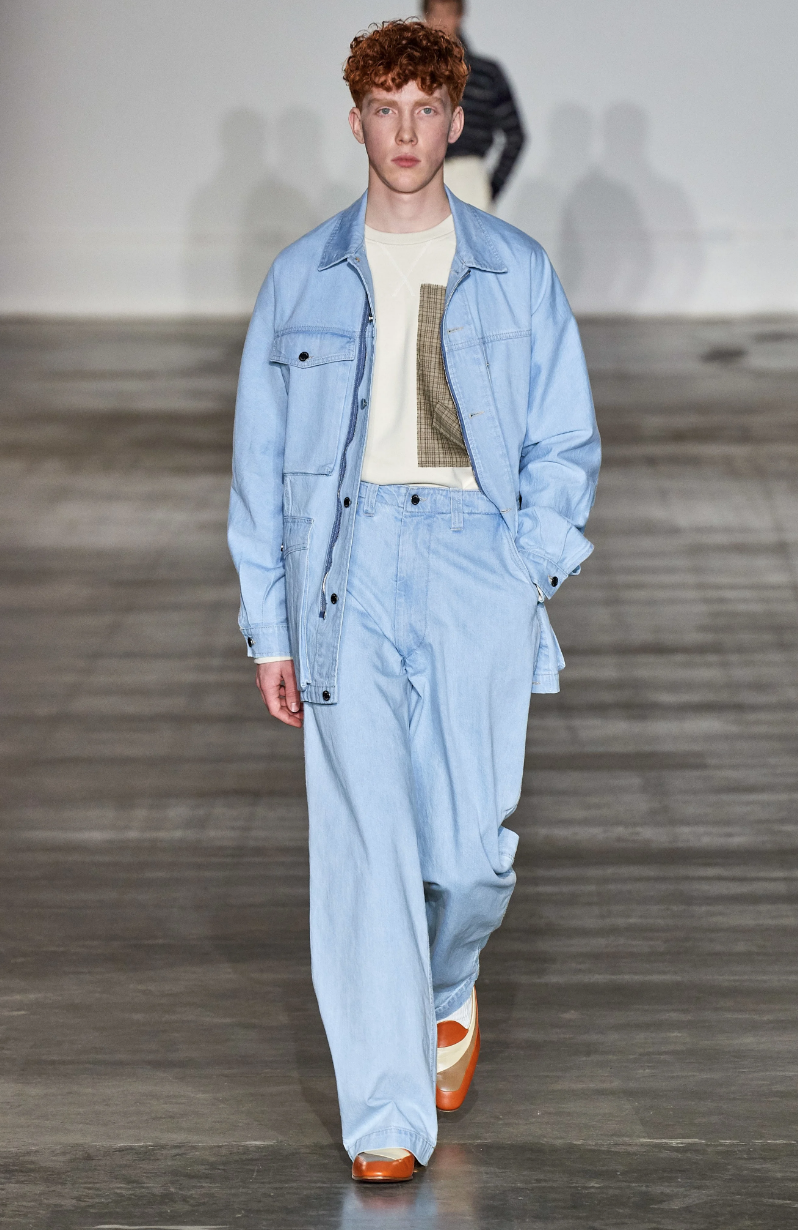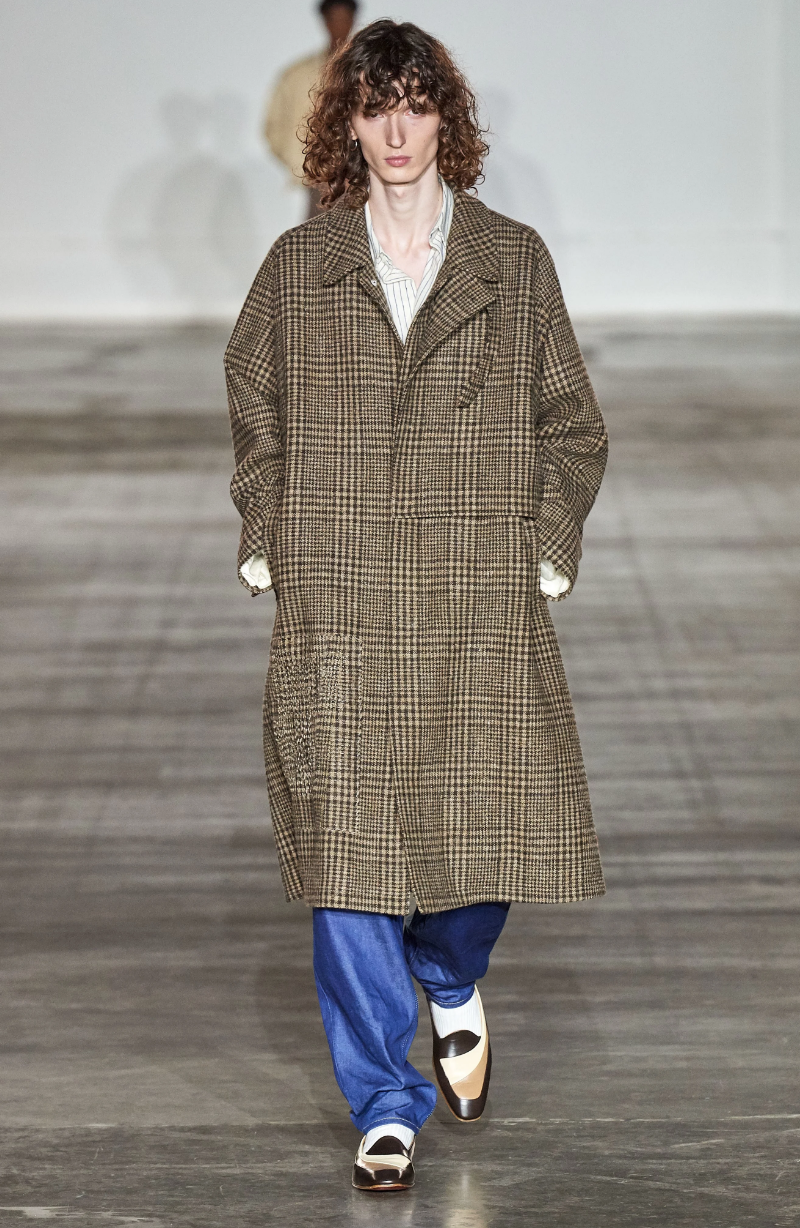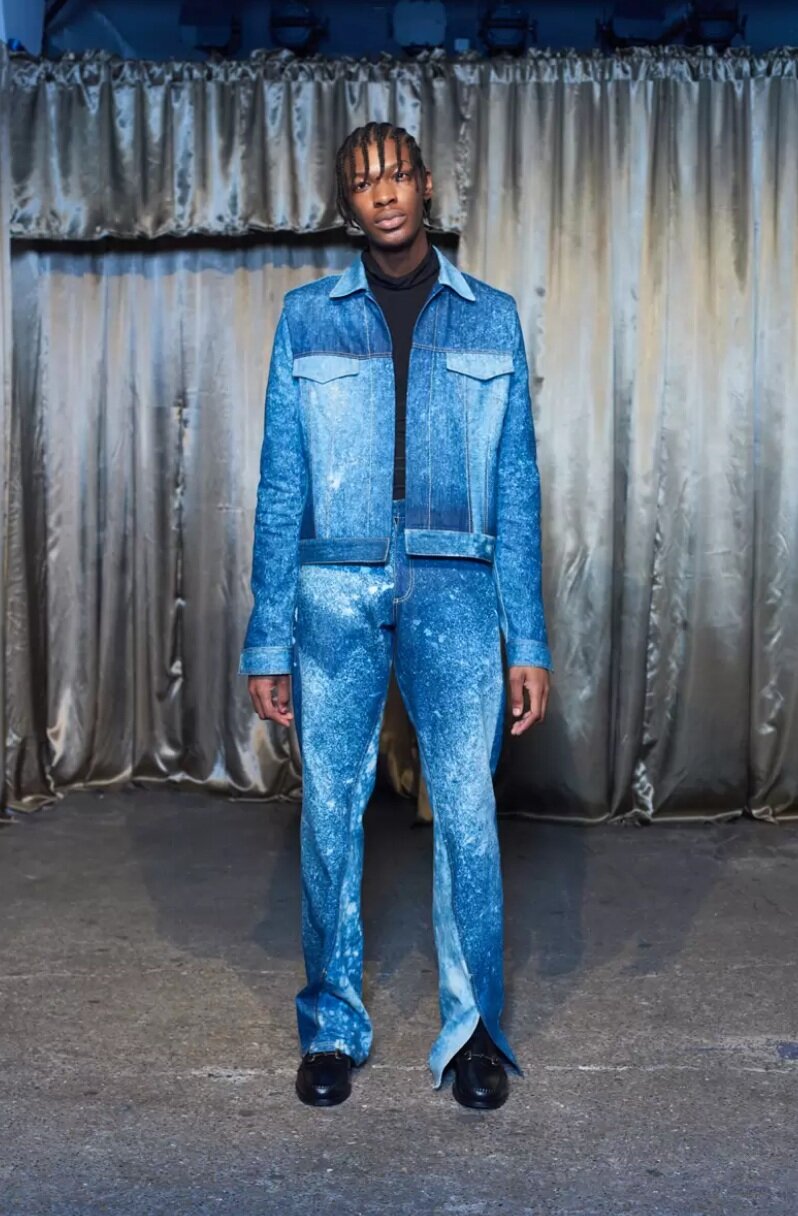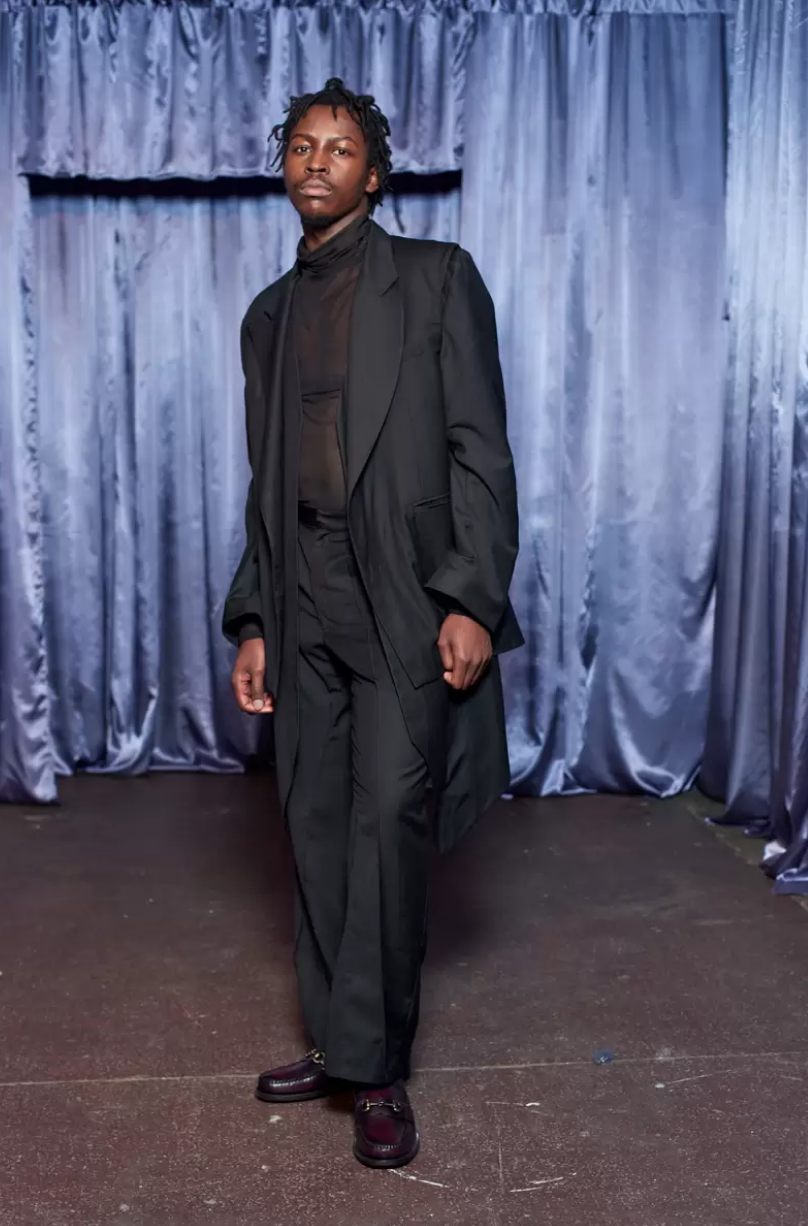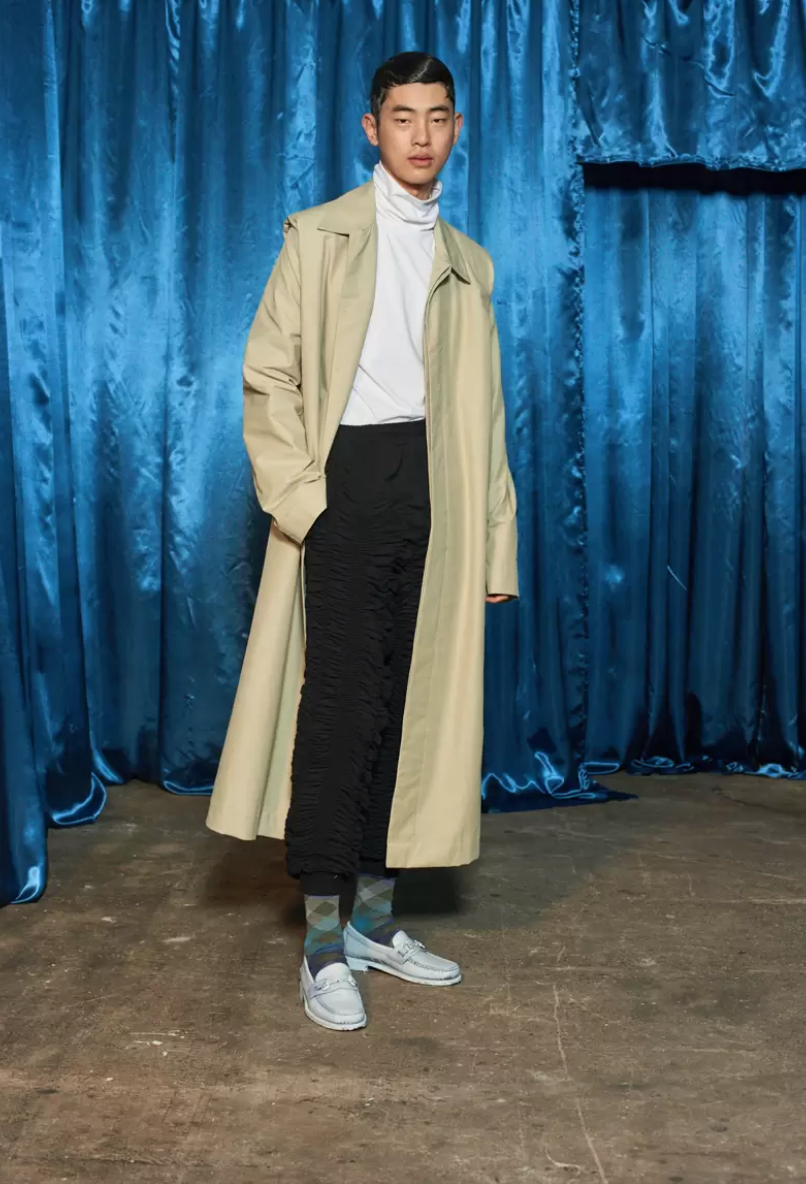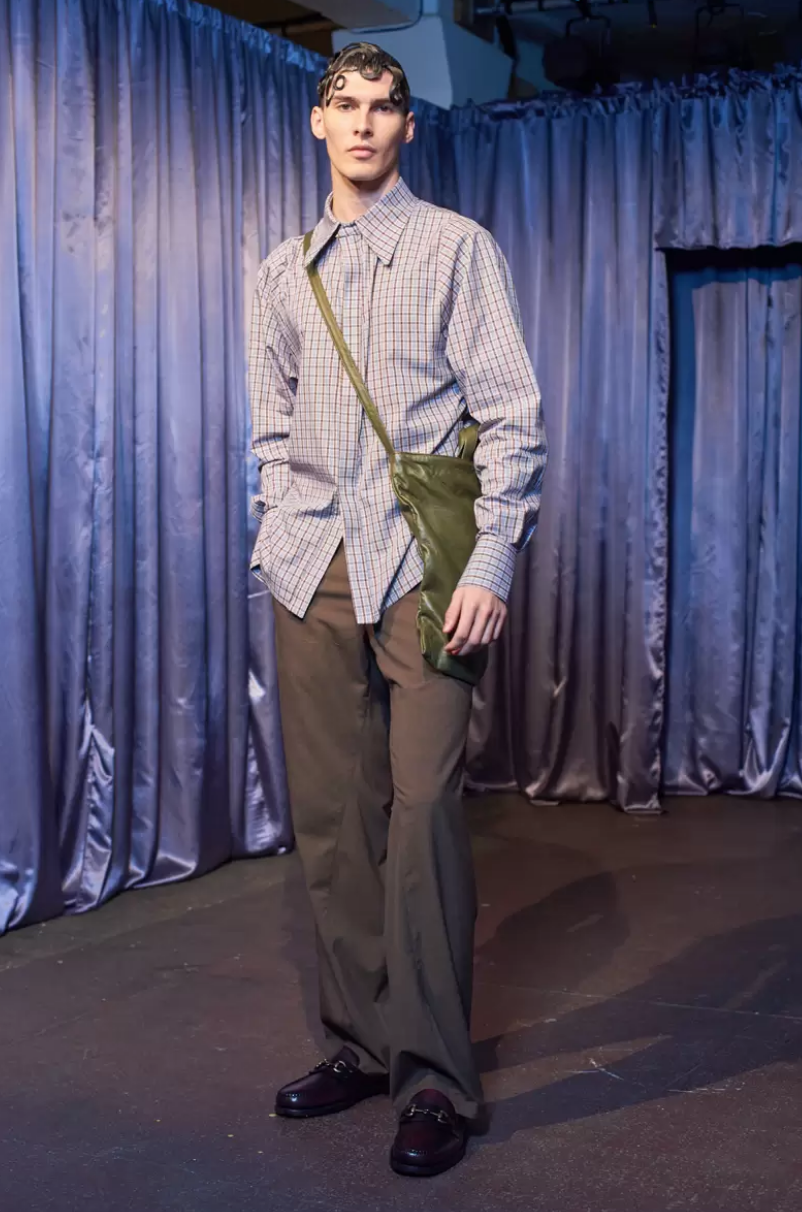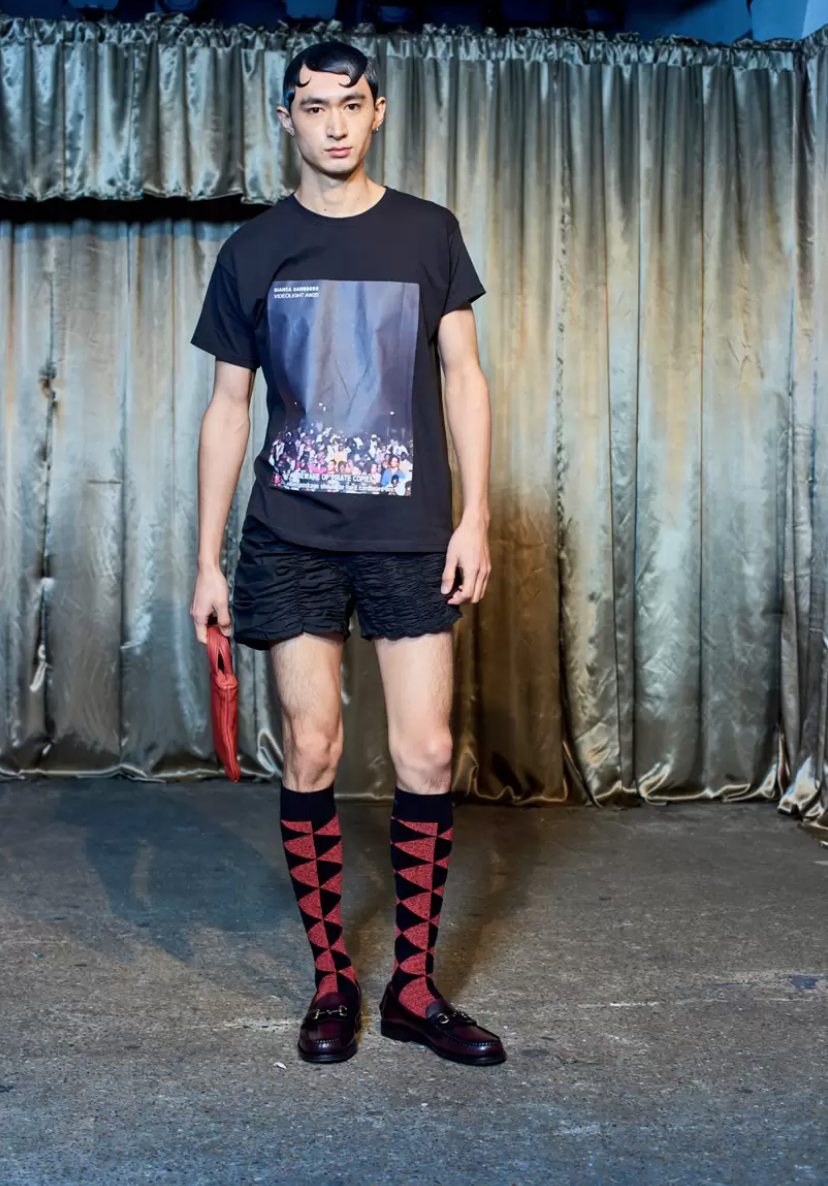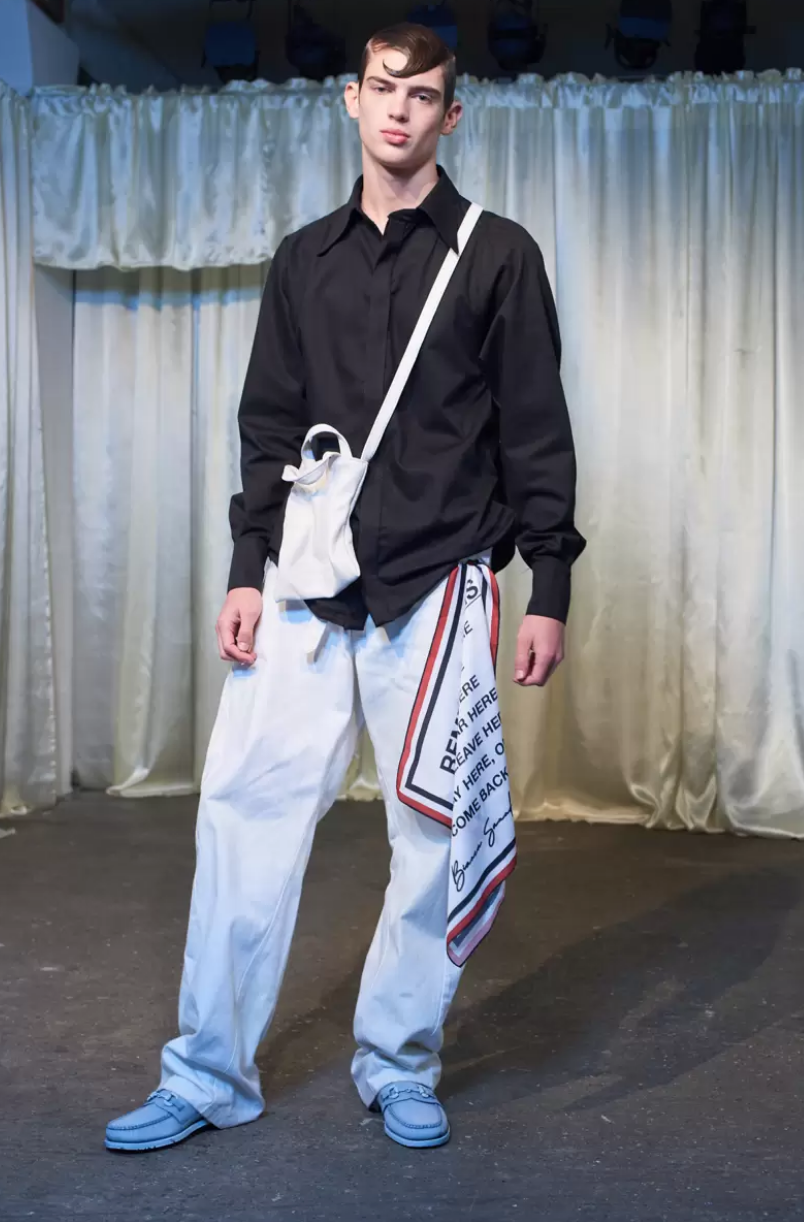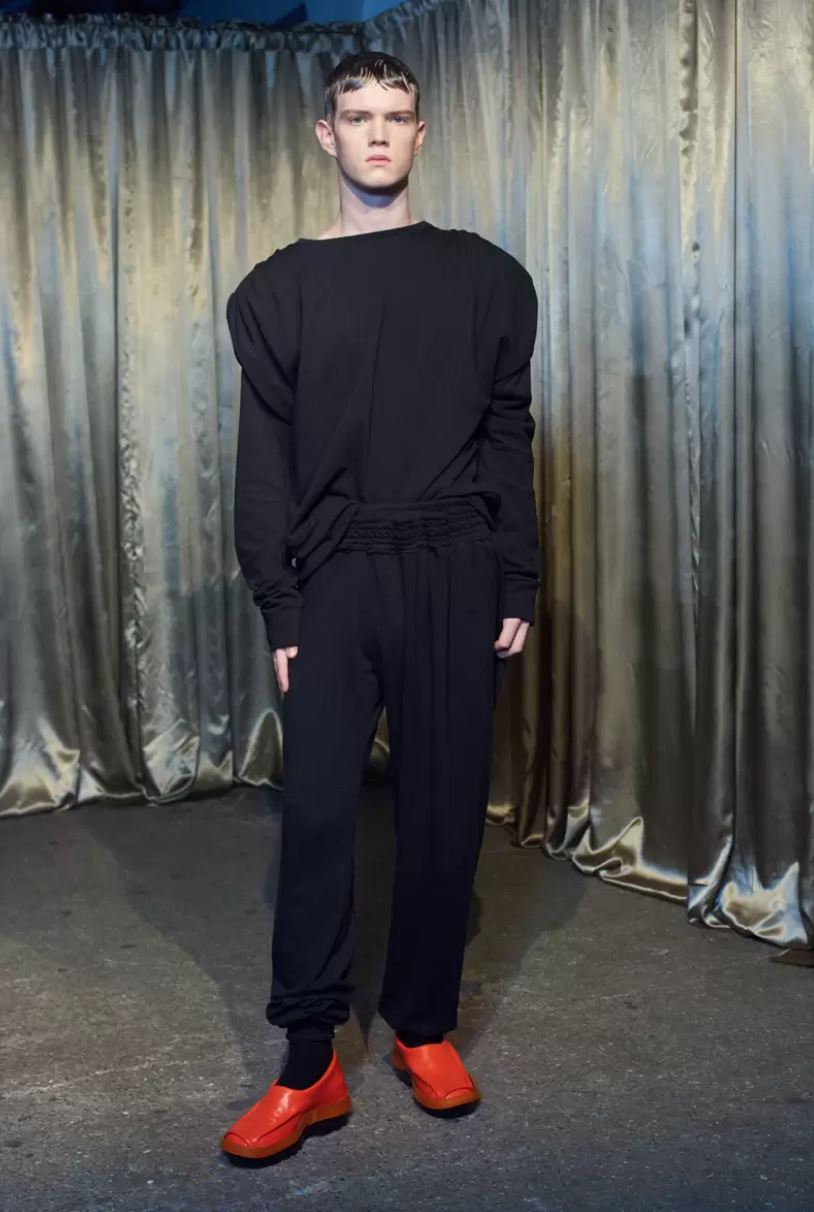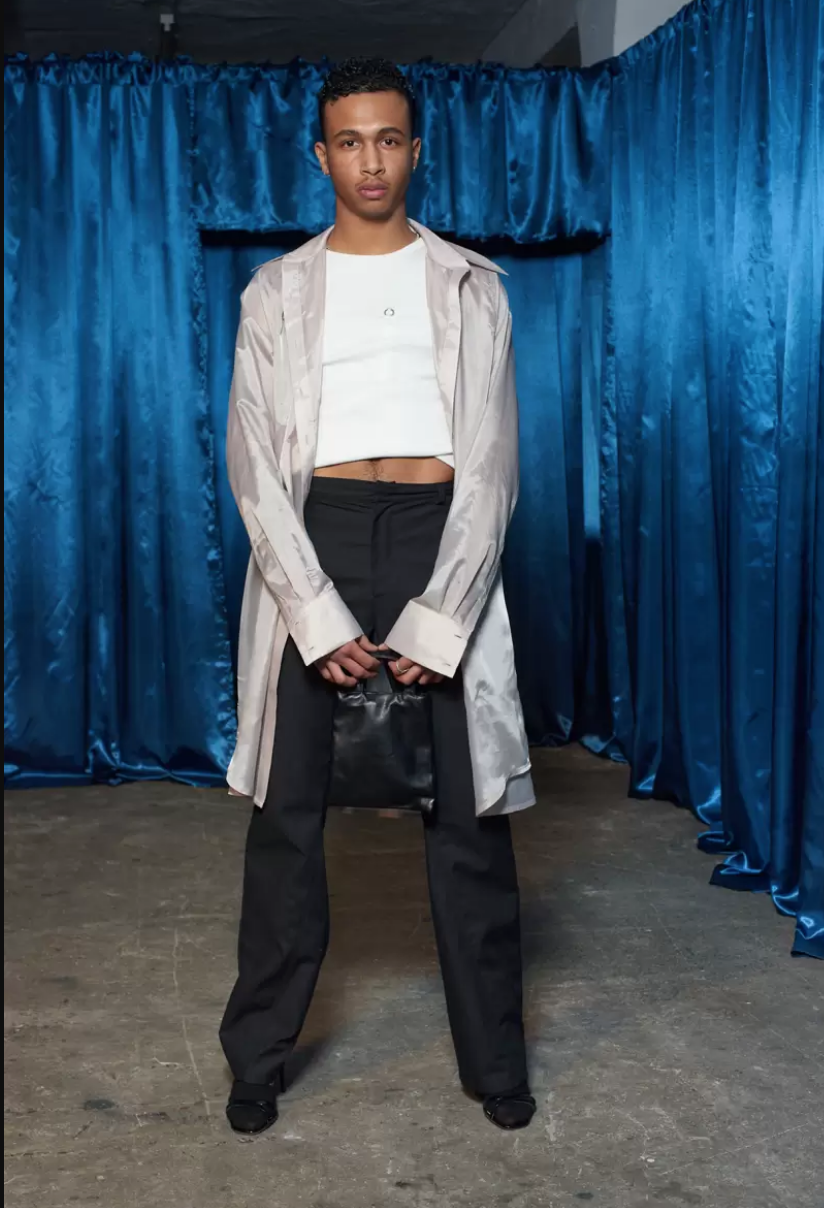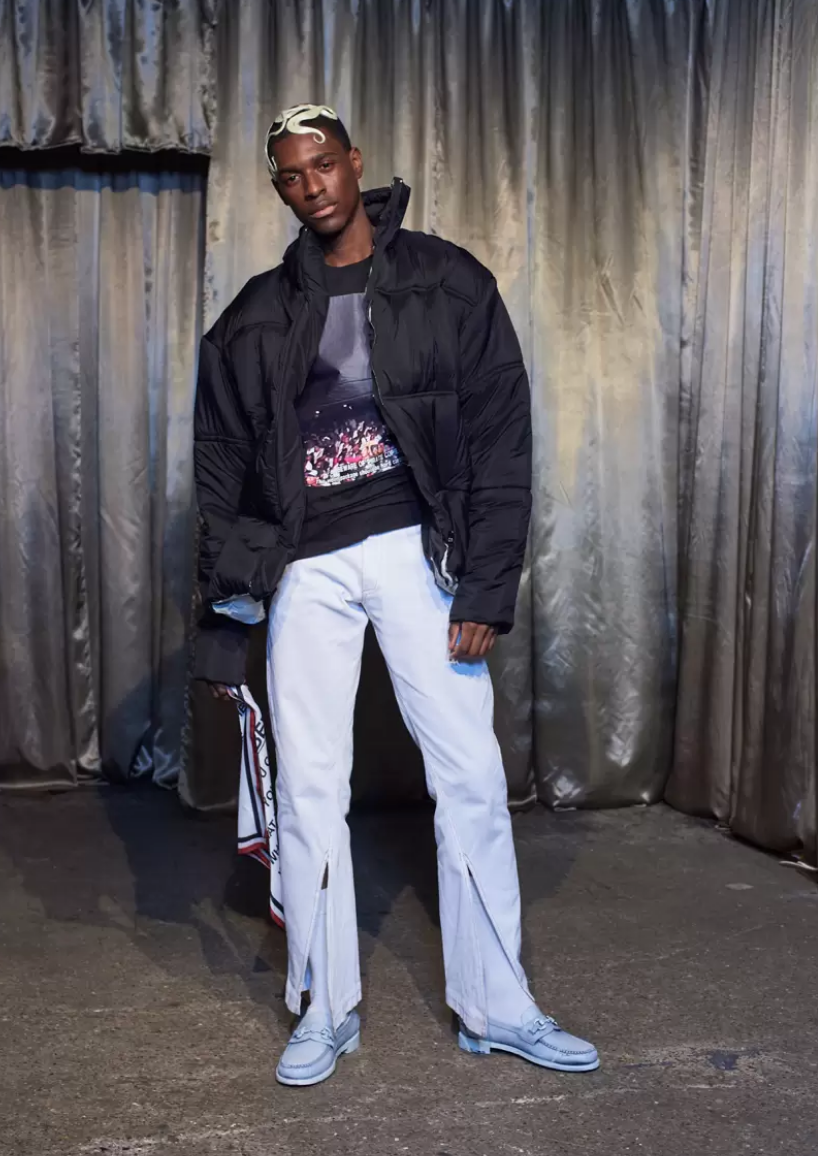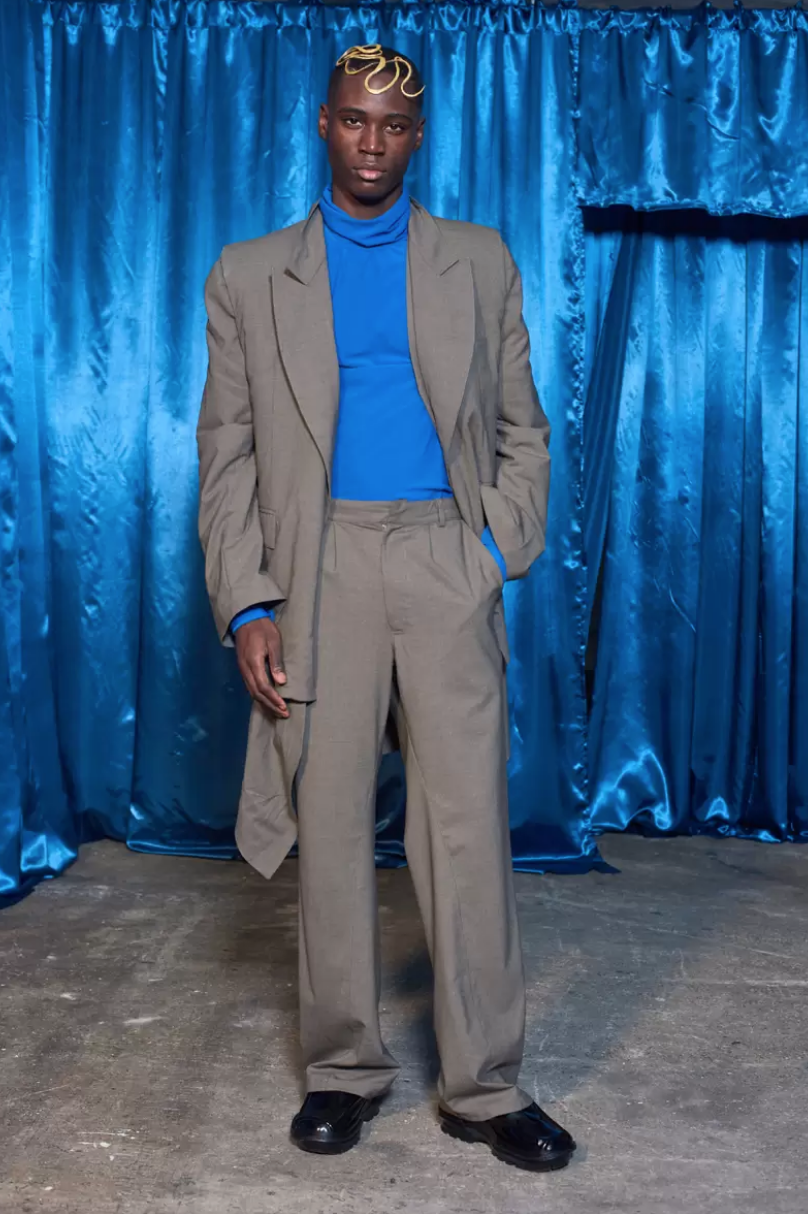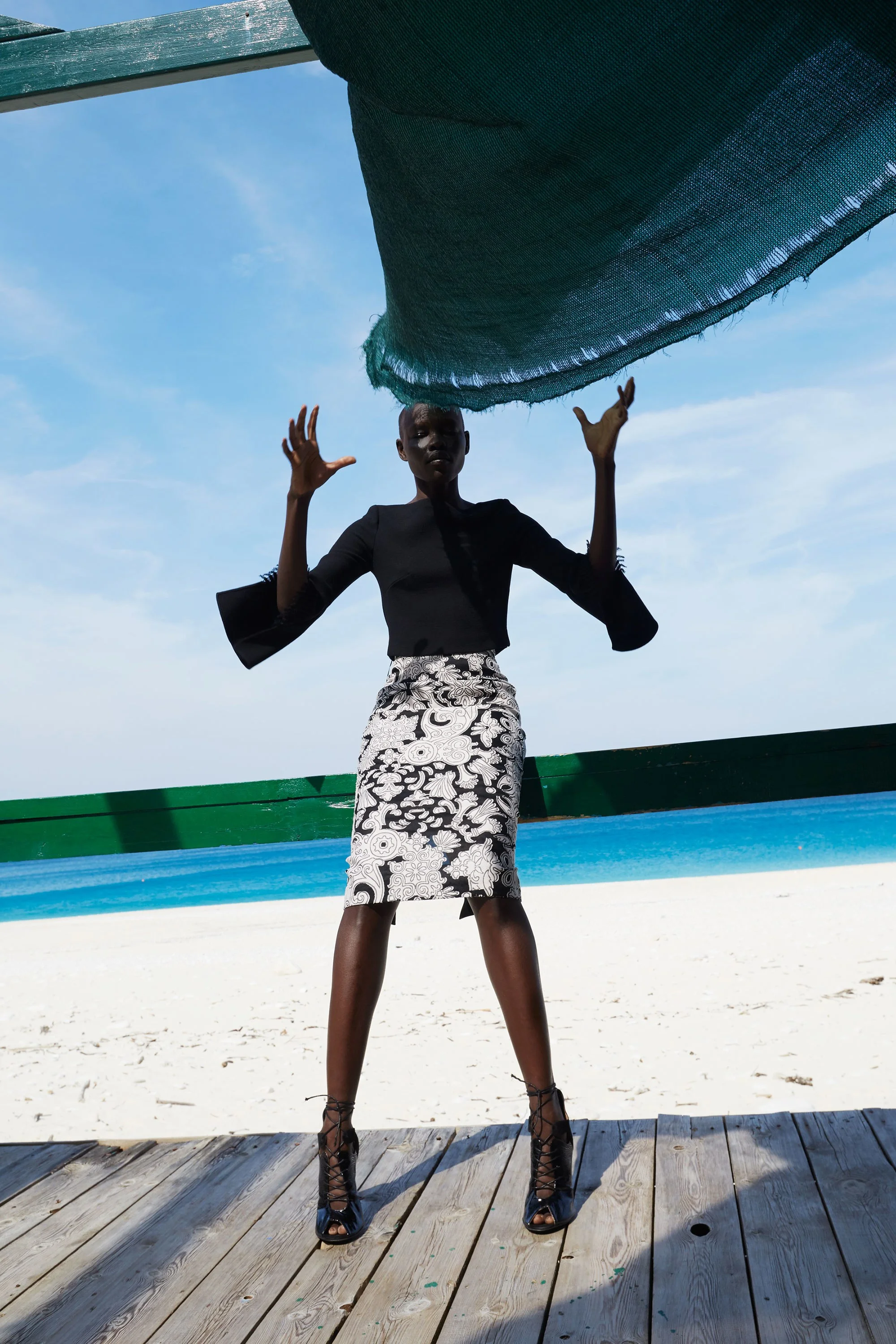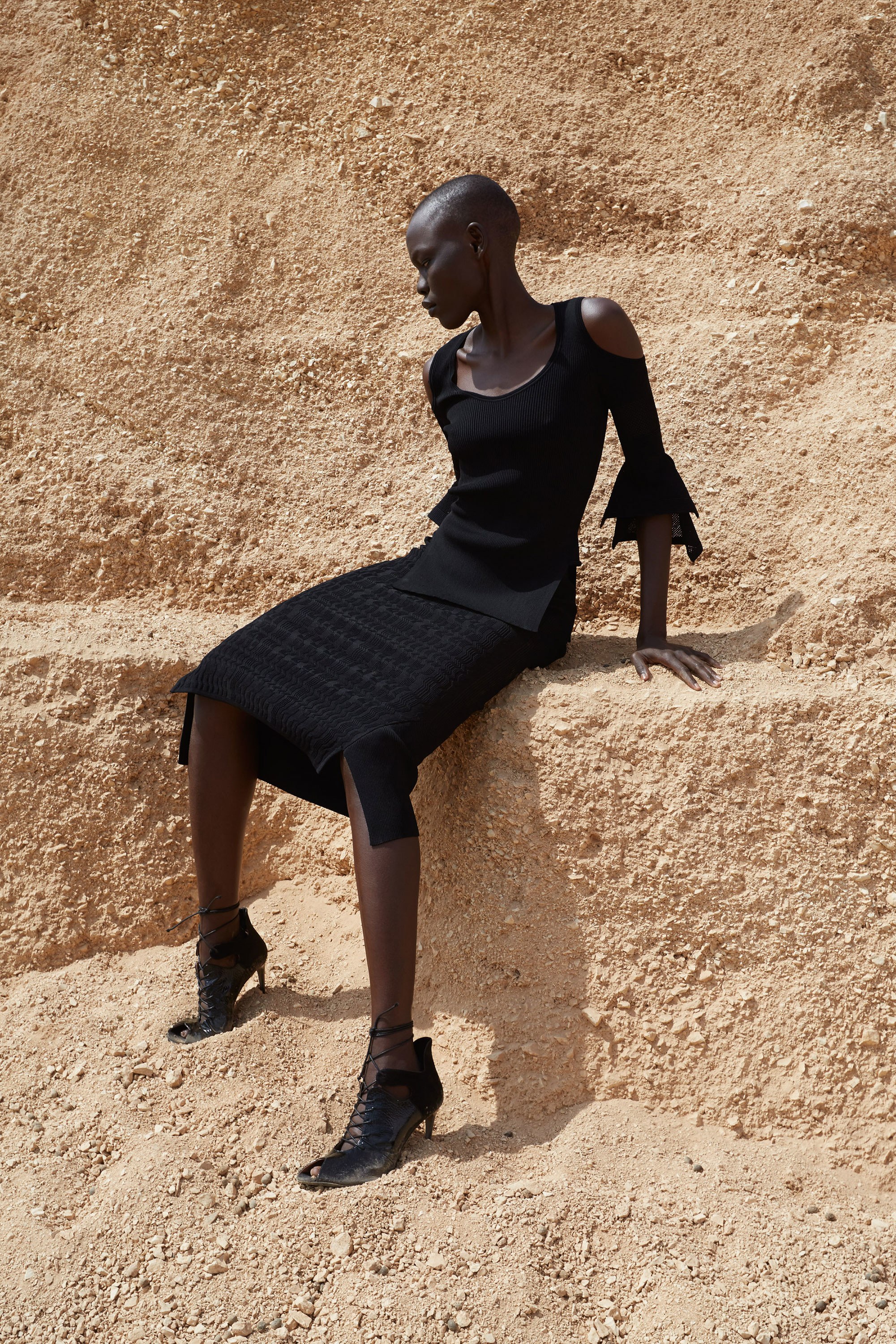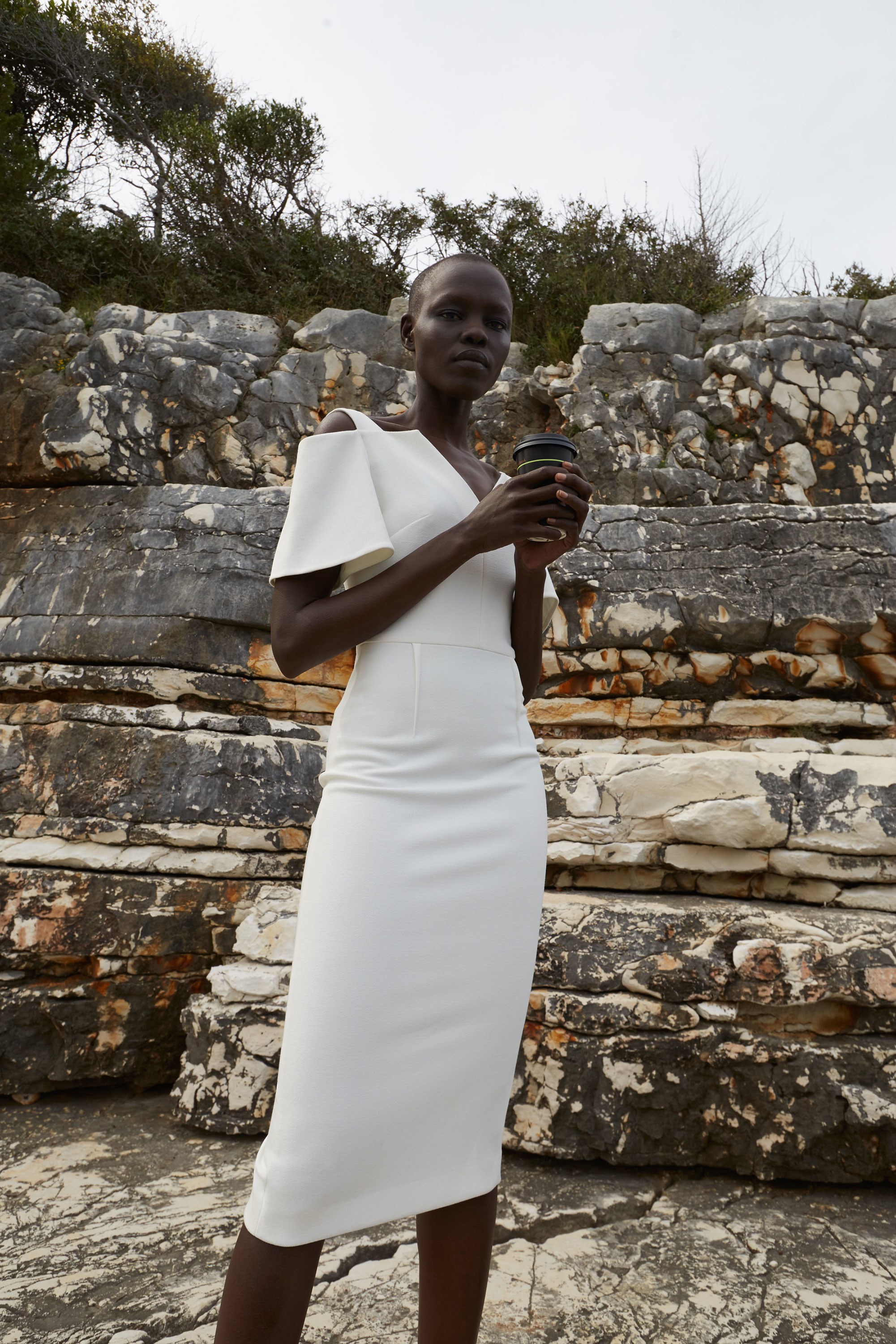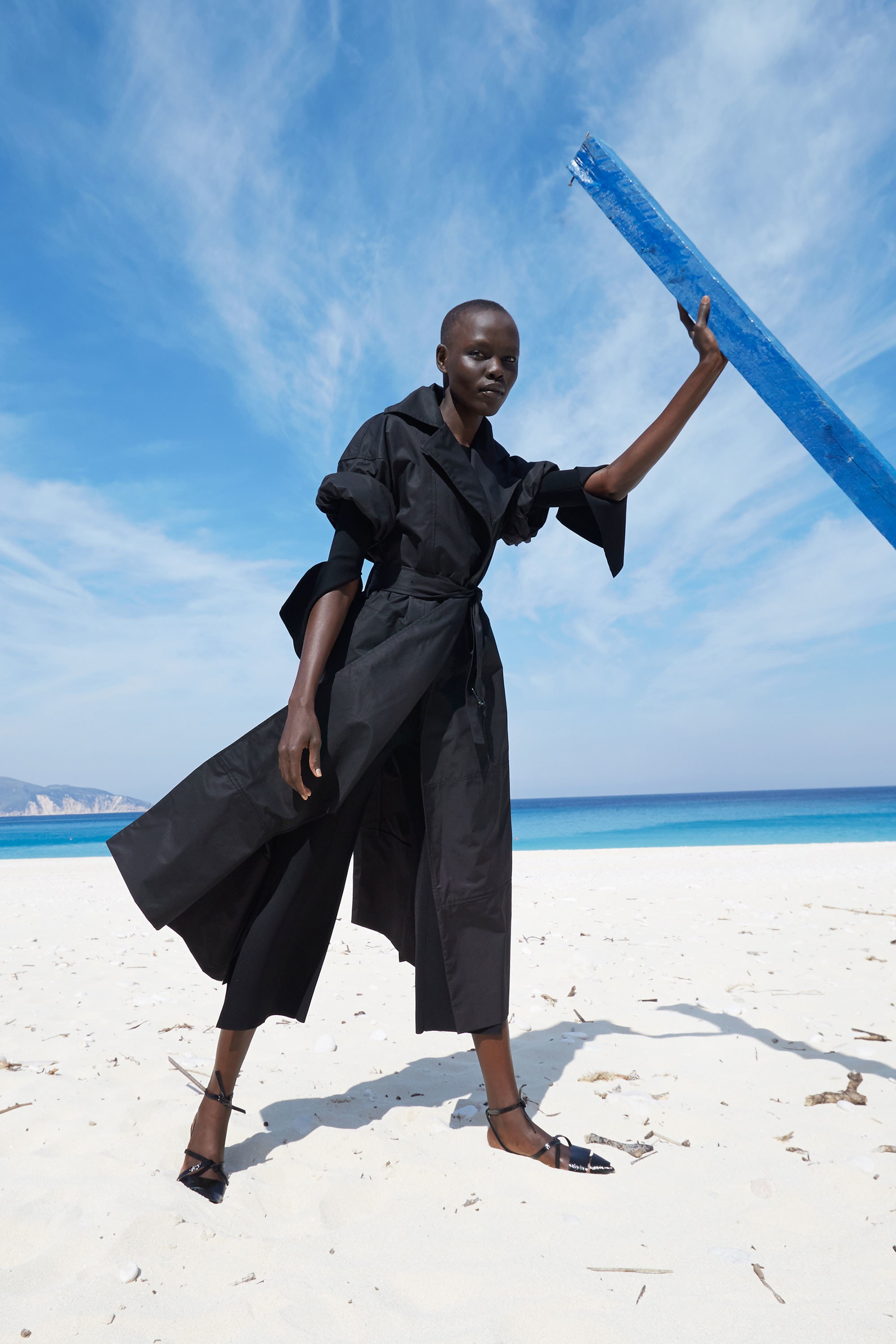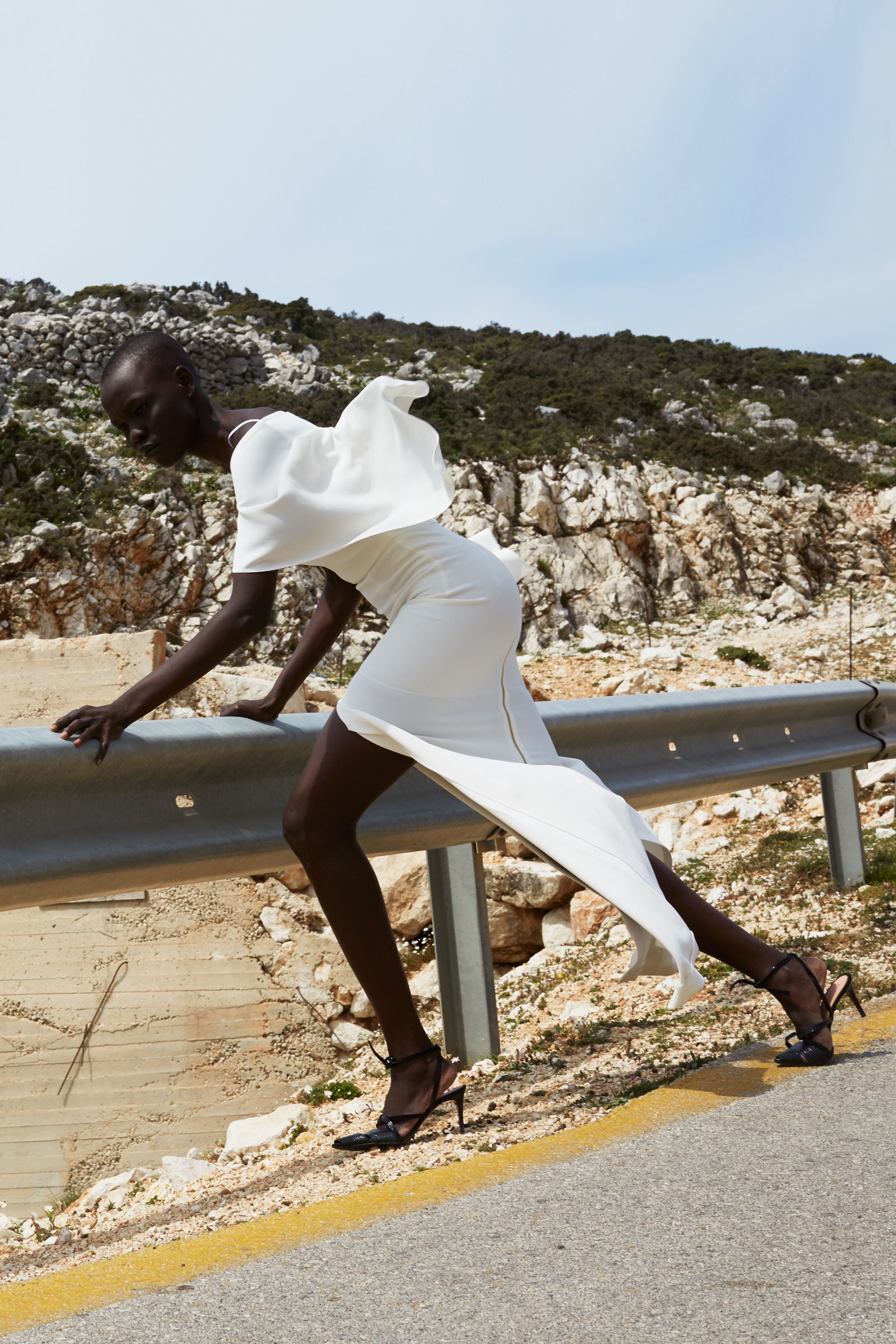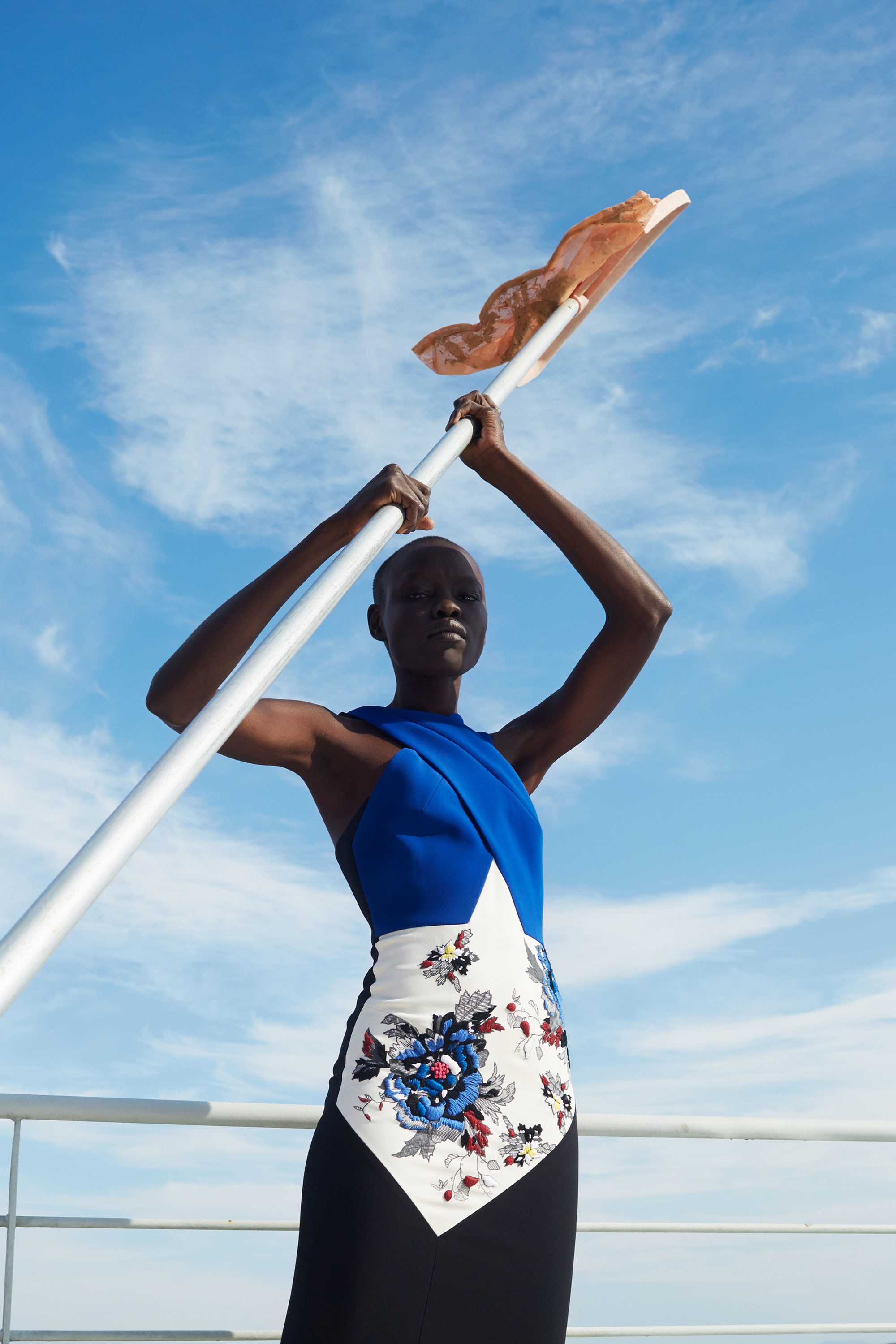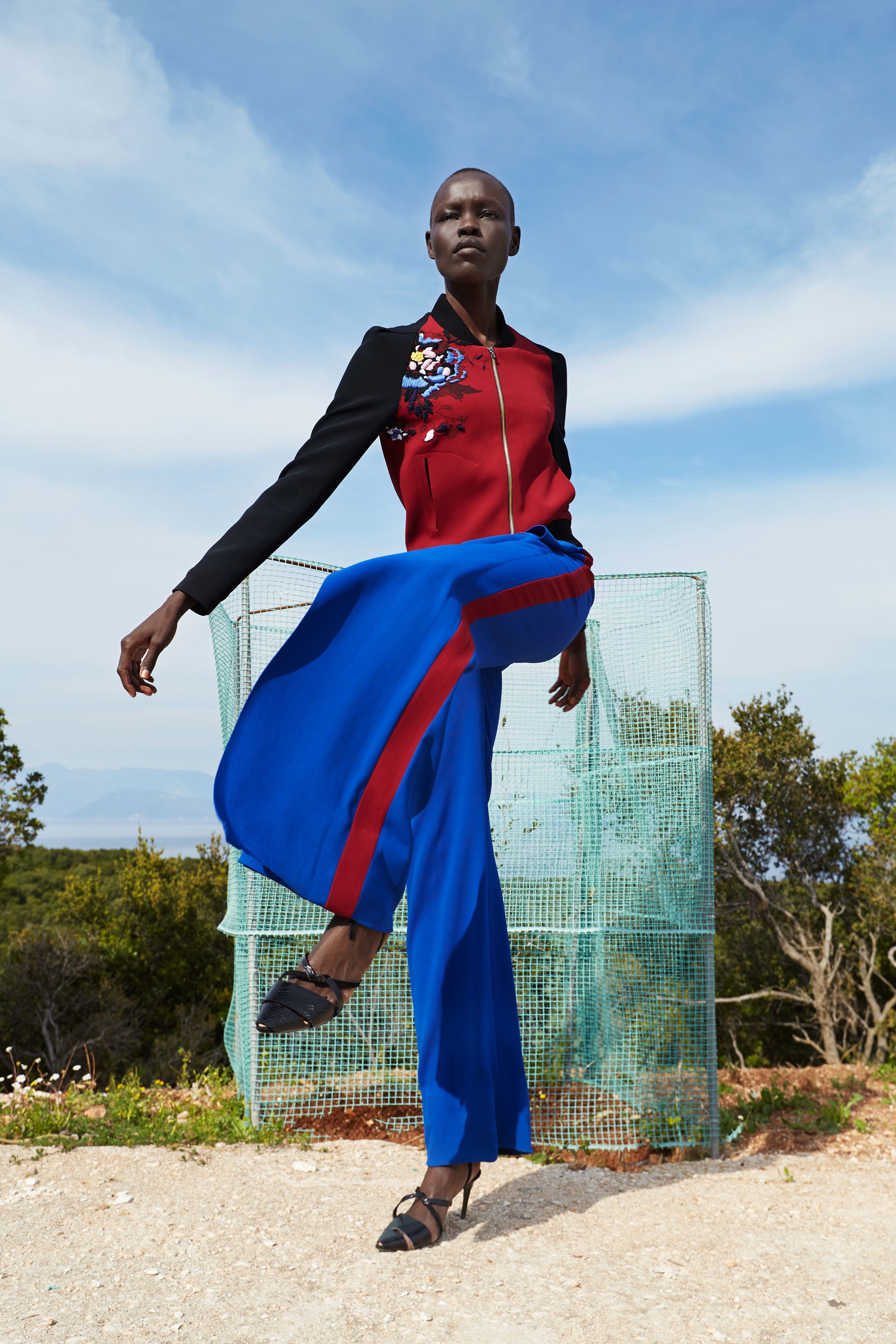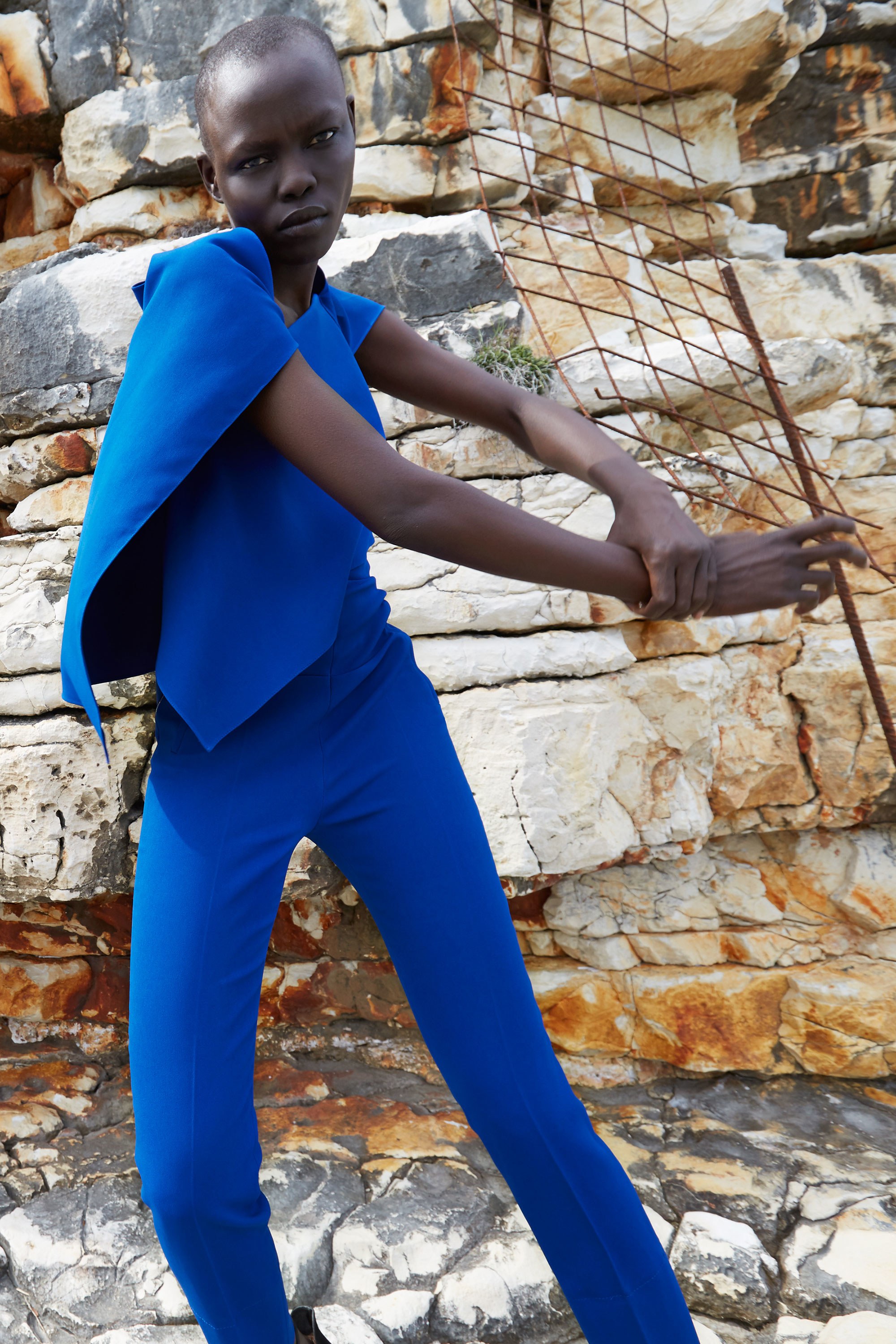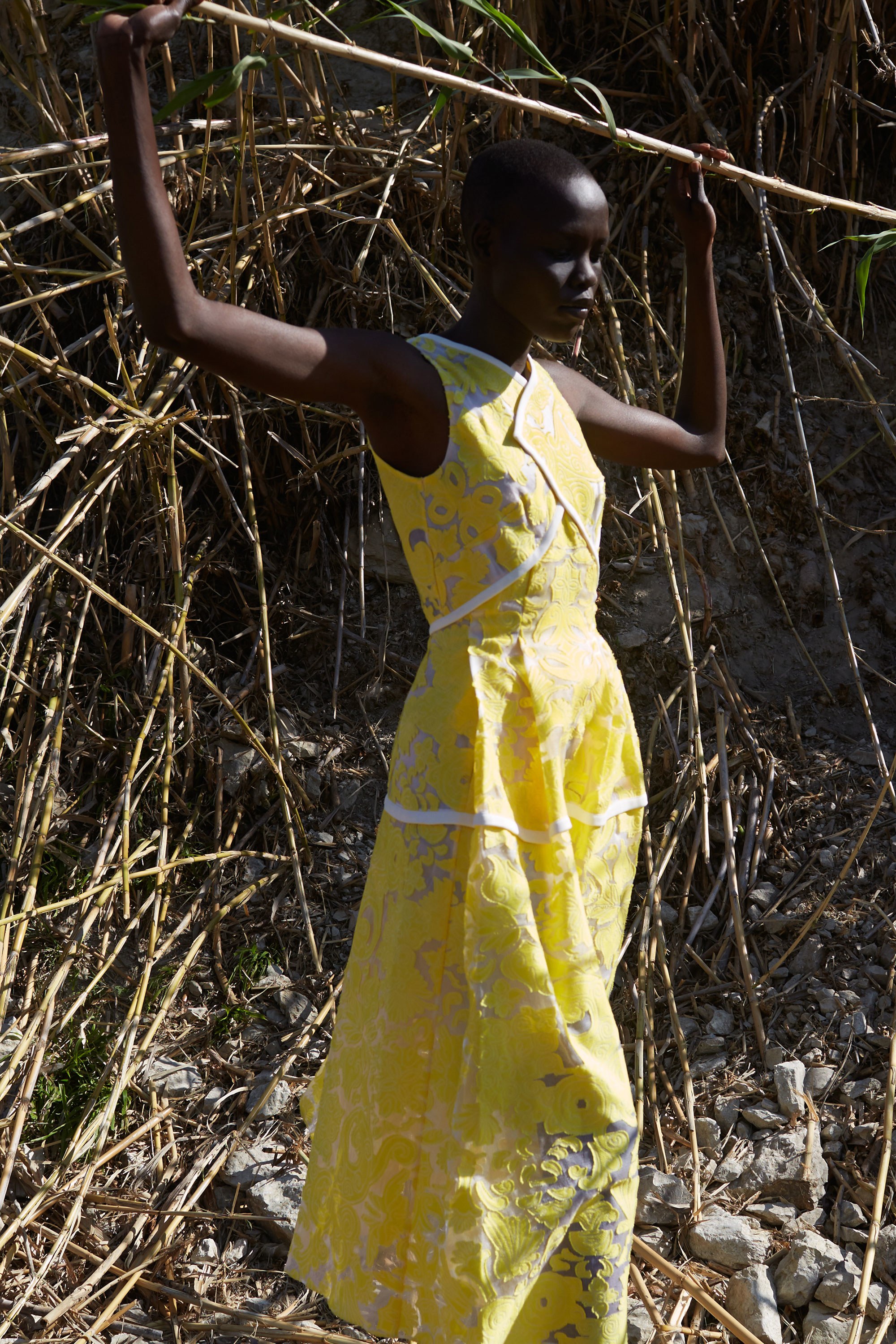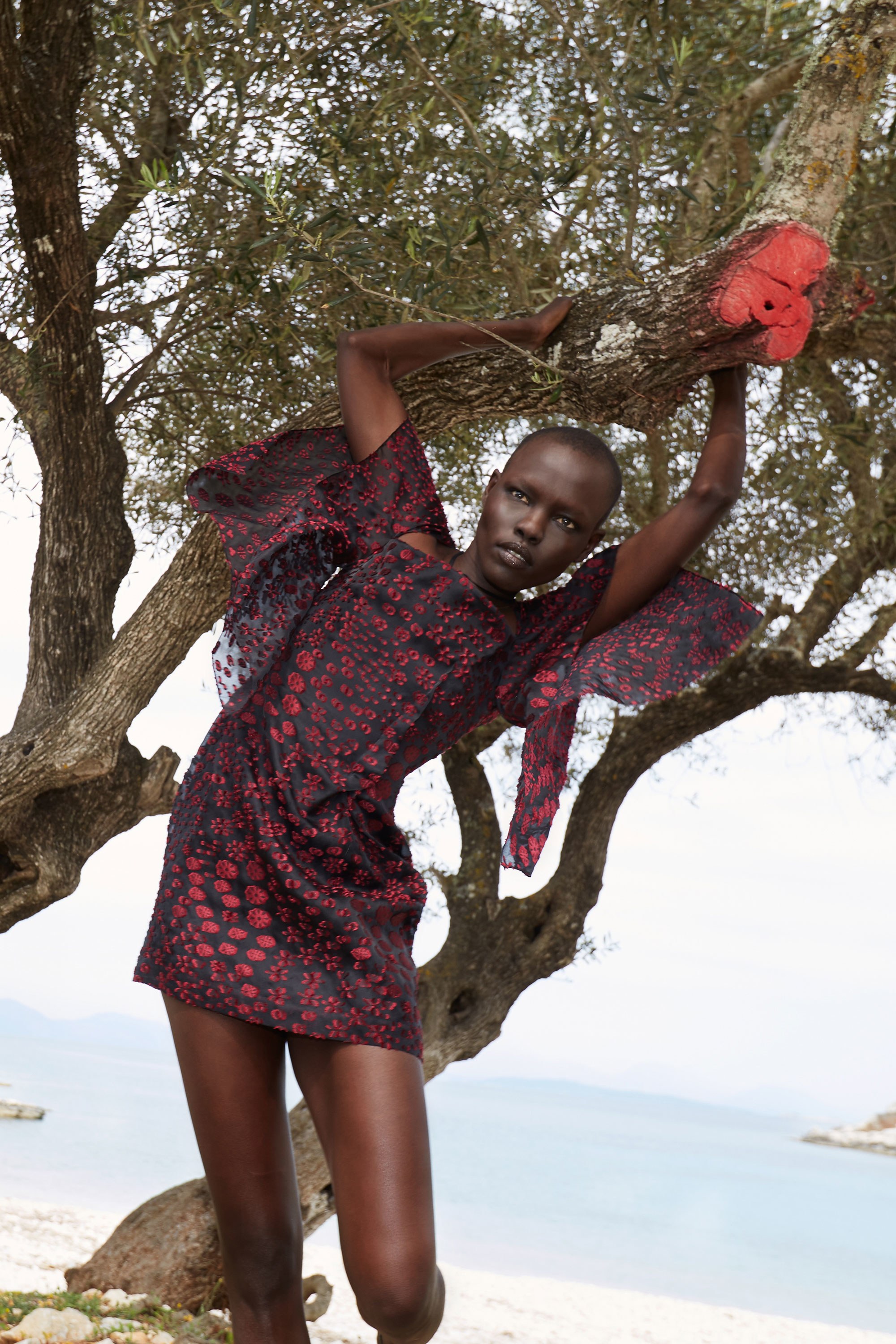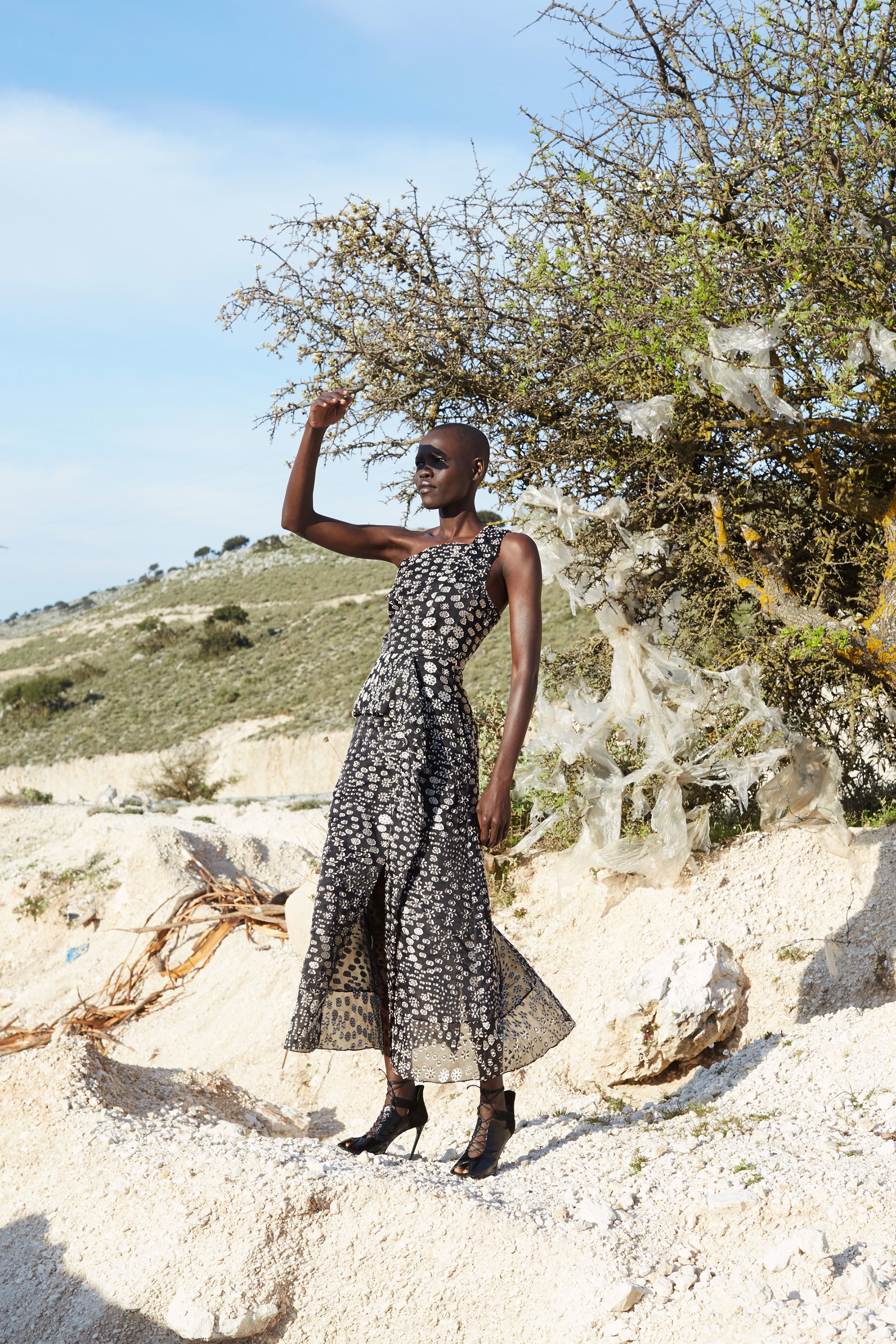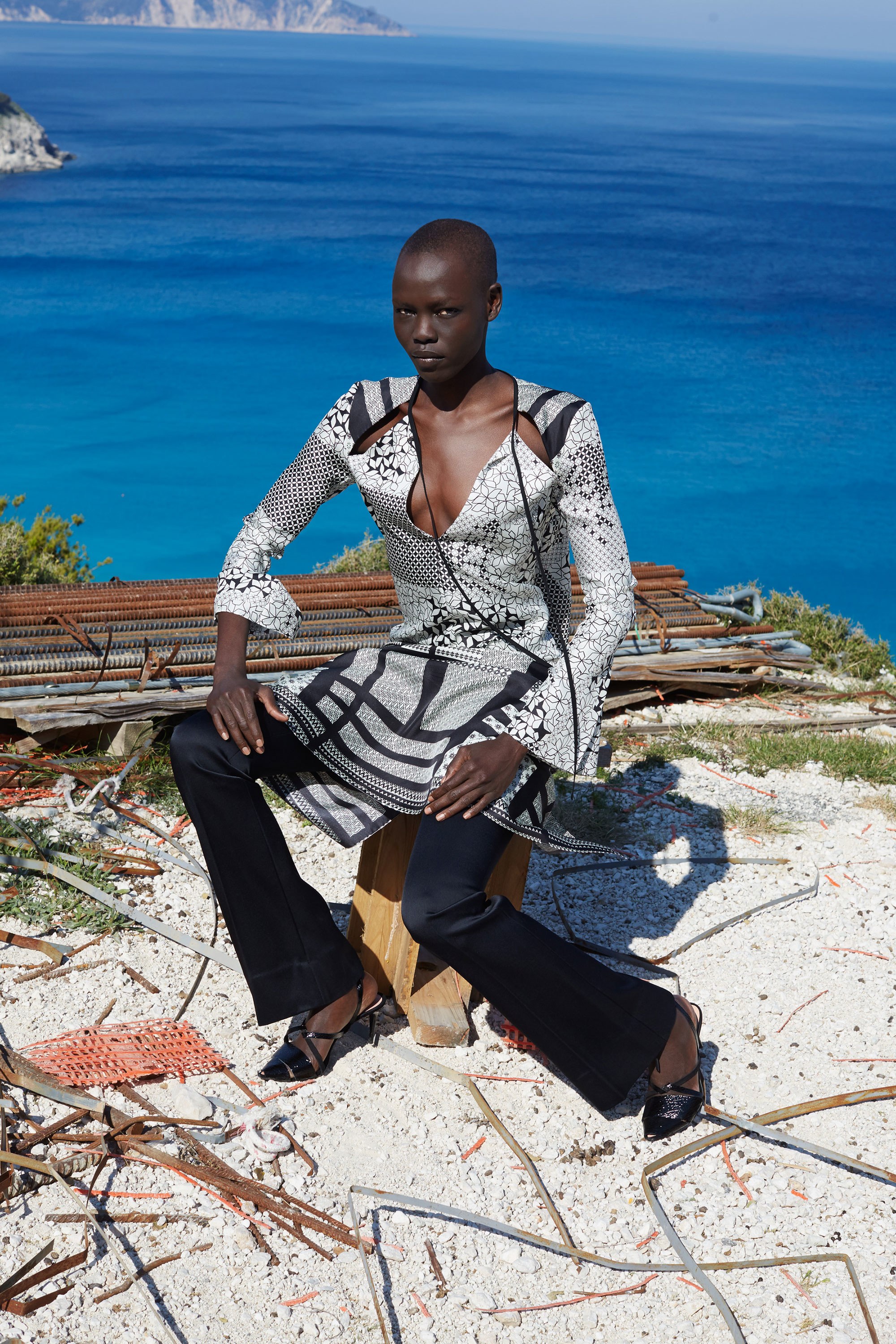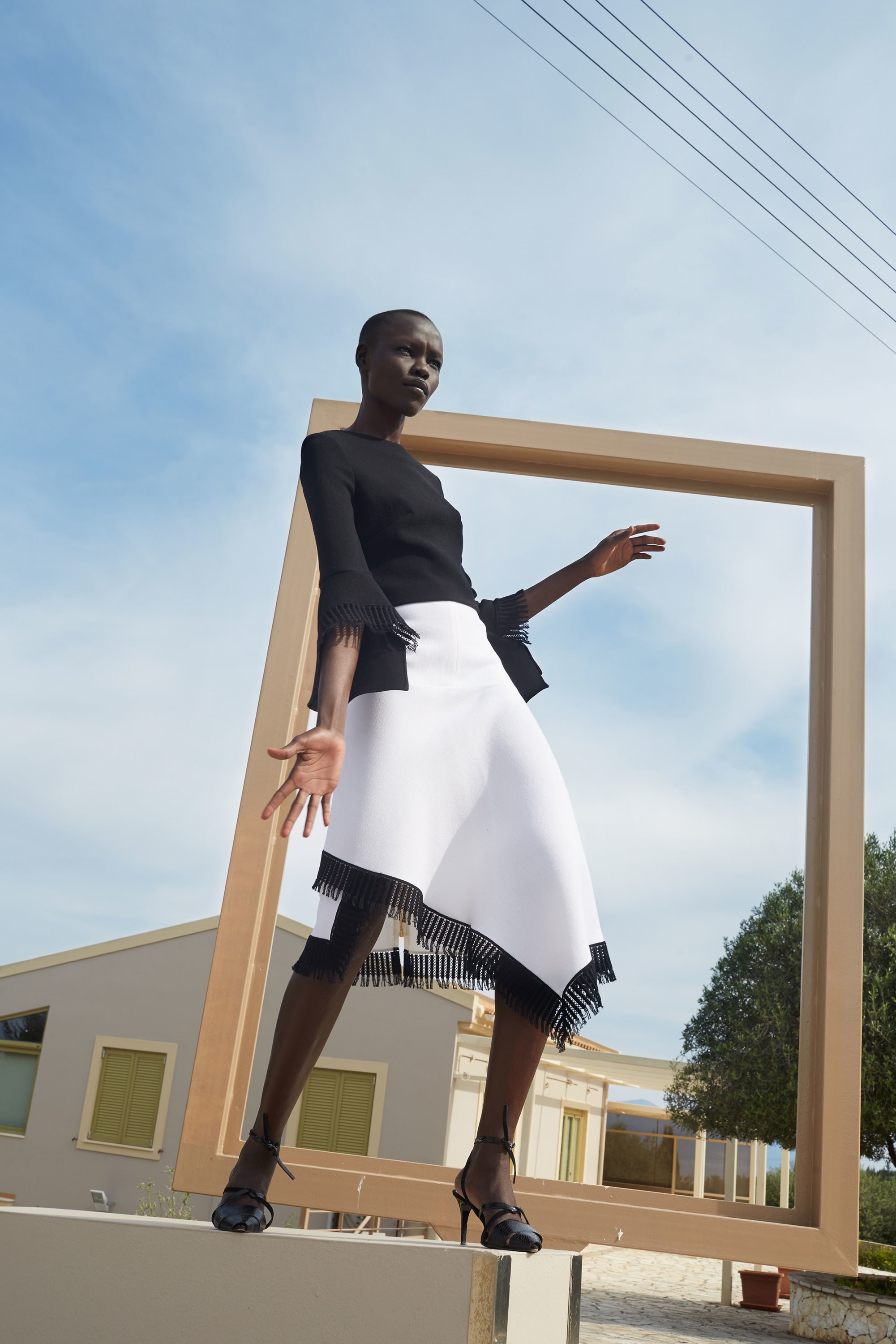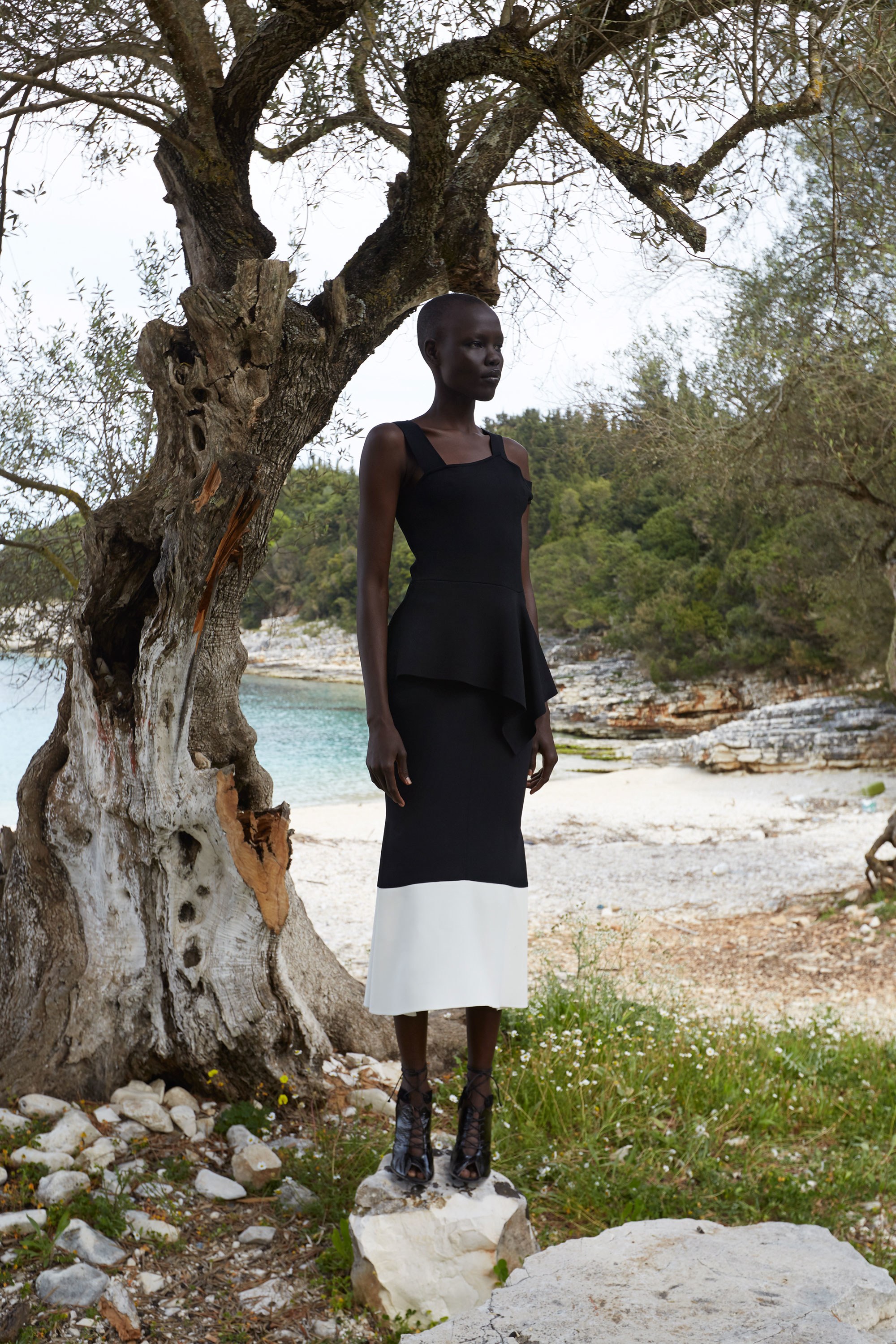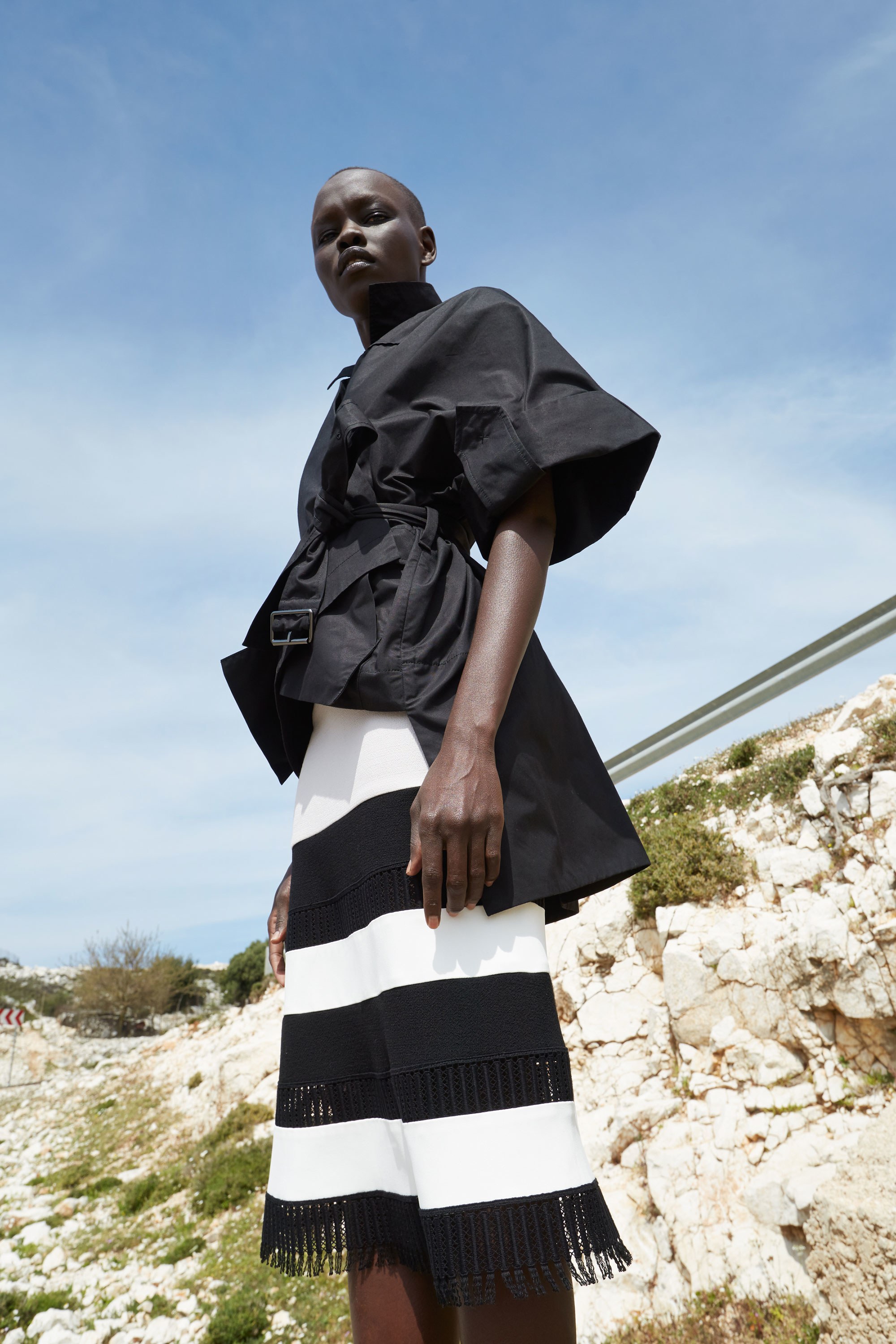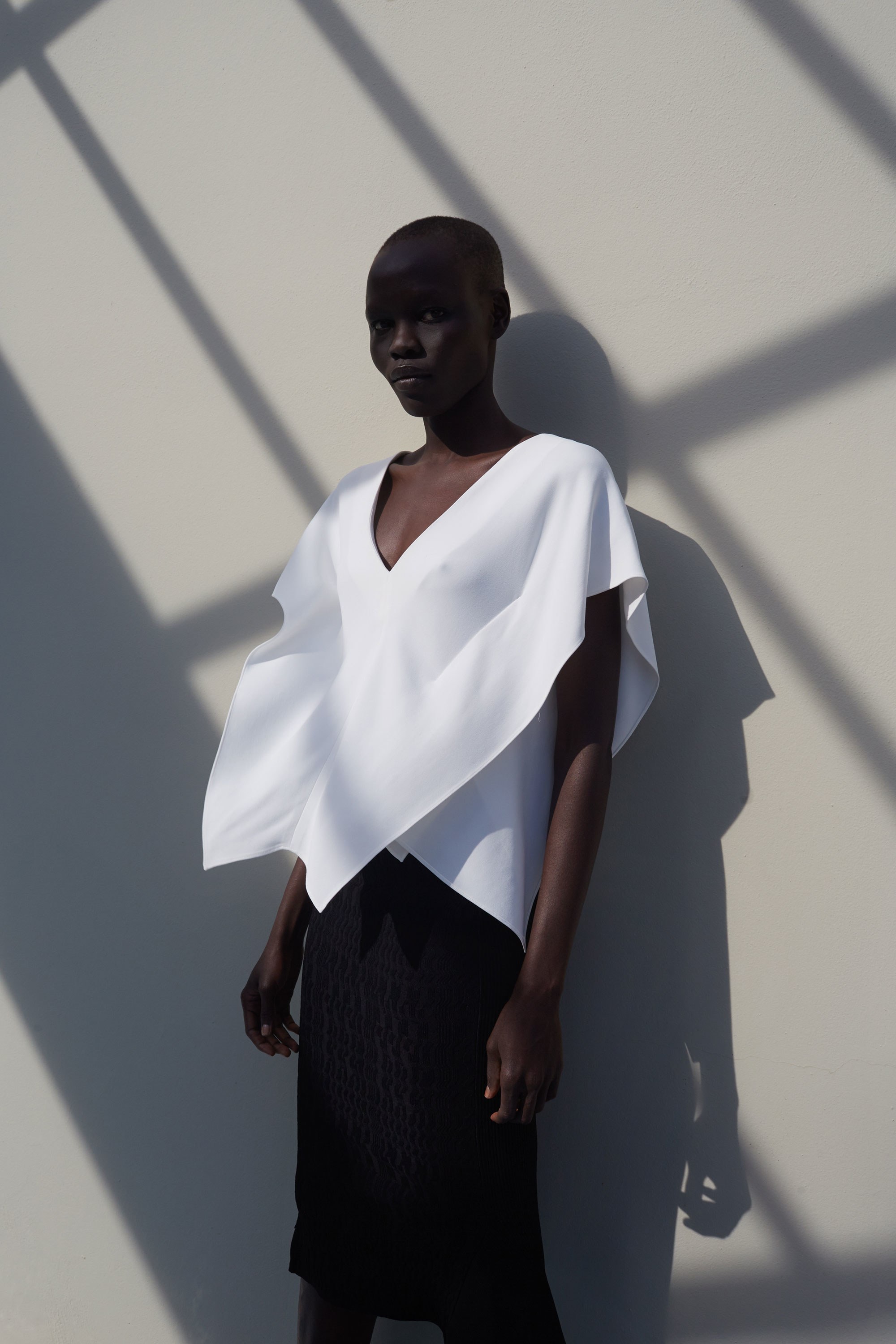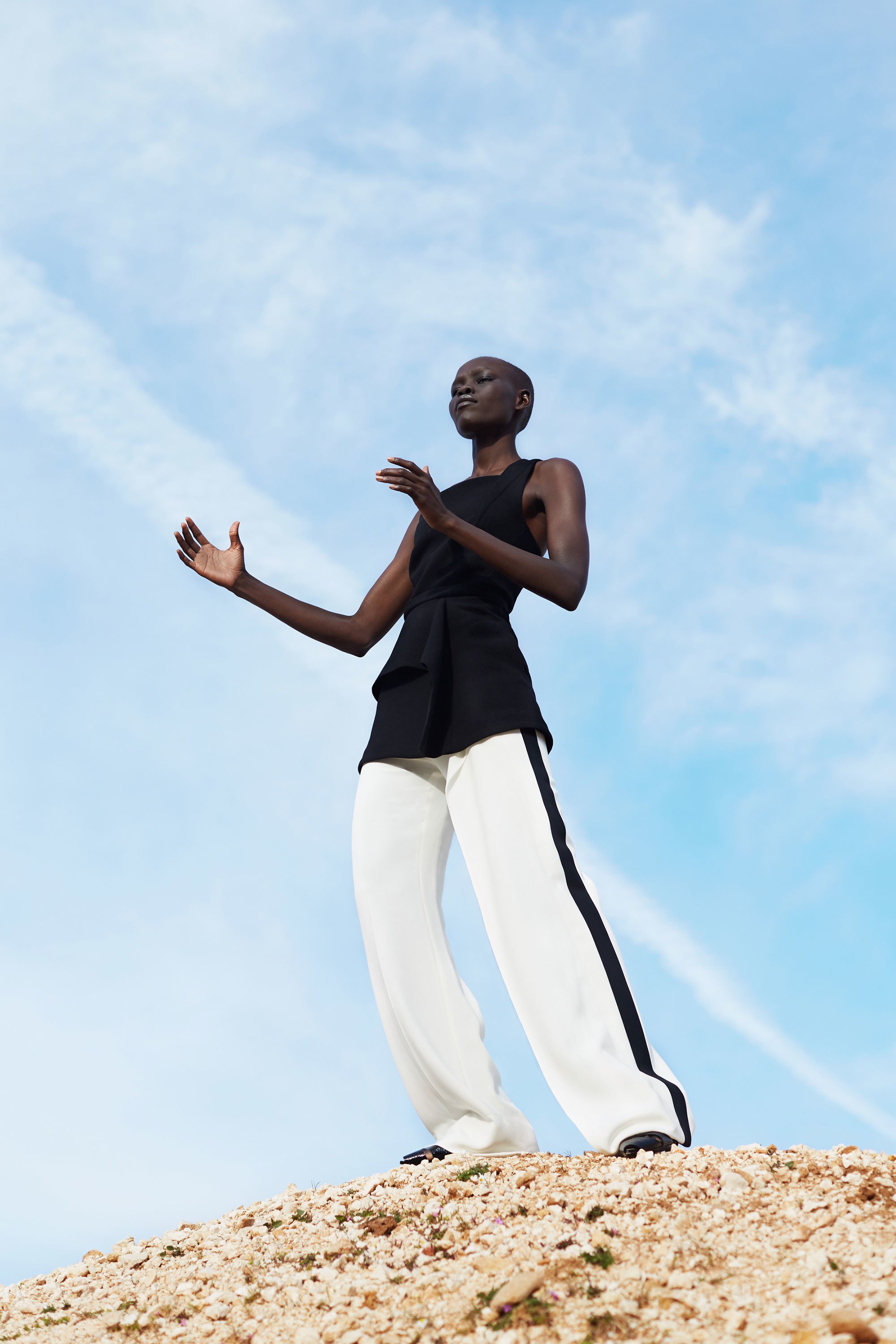Martine Rose Fall 2020 Menswear
/“This is my daughter’s school, and it’s really great and optimistic. I just wanted everyone to feel that,” said Martine Rose. “Kids, young people, education are our future and we should invest in them. Primary schools are magical. The teachers are here, there’s a lot of people with kids—it’s another community, isn’t it?”
People still talk of the open-air show that Rose put on in a neighborhood square in Chalk Farm for summer 2019; it really was one of those atmospheres that make misty-eyed memories. She was one of the first designers to sit a fashion audience among local residents. Warm, friendly, inclusive vibes, without being saccharine, are what she’s very good at fostering. This time, we were sitting in the hall of the public school that Rose’s four-year-old attends, surrounded by children’s art, banners commemorating the anniversary of the women’s suffrage movement, and boards asking kids, “What kind of leader will you be?” It created that same sort of local family vibe, to start with.
As a character, Rose is a strange mix of unpretentiousness and self-belief. One of her favorite games is playing with logos and slogans. “Martine Rose Expect Excellence” read one. The words “Tottenham, Croydon, Clapham Junction, Tooting” were woven into jacquards on her big, lairy tailored jackets, name-checking all the areas in London that Rose and her family have lived and worked in. She’s actually a champion of the ordinary and the bizarre—and her talent in fashion is that she doesn’t make any distinctions between them, or between what’s considered beautiful or ugly. “The inspirations are always the same. It’s always about outsiders,” she said.
Nor does she particularly comply with seasons, or doing something completely new every time she has a show, which is according to when she feels like it. Her street-cast crew were indeed her avatars of oddness, from the side-swiped frizzes on the top of their heads, to the margins of extra sole beneath their feet, in collab with Six London, according to show credits.
In between, Rose clothed her neighborhood heroes in pieces she said she’s reprised from her archive, “with a bit of friction” from something sexy. Black latex made an appearance as she cut a signature wrap-fastened jacket as an elongated coat-dress, and put kilt buckles on a tight, shiny pencil skirt. Womenswear? No, she hasn’t really done that before. Rose may be a responsible, education-promoting mom of two in her 40s these days, but it was no stretch to imagine her in these bits and pieces back in the day when she was dressing up to club in the ’90s.
Those who buy Martine Rose are, similarly, believers in the offbeat and the slyly subversive, as well as others of the romantic persuasion that there is or ought to be an underground way of dressing. (Whether that’s actually been killed off in the age of constant self-documentation by Instagram is a moot point.) If she intends it or not, her black leather western waders are a dead cert for a street-style pose-parade outside some show at a men’s fashion week in the not very distant future.
There is a lot to appeal to the male fashion geek too: Those who are in the know understand what the Farah brand meant to the Jamaican community peacocks of style in the ’70s and ’80s, including pants with perma-creases, as worn by Rose’s uncle, “but this time expanded to XXXL proportions.” Messing with heads and proportions is also a Martine Rose specialty. The way she belts trousers hitch-up high with a spoof circular metal R-logo buckle, for instance. Ditto with her interpretation of the Casuals’ habit of knotting sweaters around their necks on the way to soccer terraces and pubs in the ’80s; she’s melded the shape to become scarves.
Others may be attracted to Martine Rose pieces because they are just cool and simple to wear; men who don’t want to be carrying a massive brand overstatement around with them. The checked coats fit that practical bill; so do her frill-front shirts. Geek fact: When she started out on her own over a decade ago, Martine Rose tested the waters with a small line of shirts. The waters said that a tide of in-people, designers, stylists, and editors wanted to get their hands on them. Which is how, little by little, Martine Rose became one of the most influential designers’ designers, while remaining exactly who she is, becoming a doting mom, and proudly showing off the neighborhood she comes from. Cheers to all of that, Martine.
Source: Vogue
FASHIONADO

